News
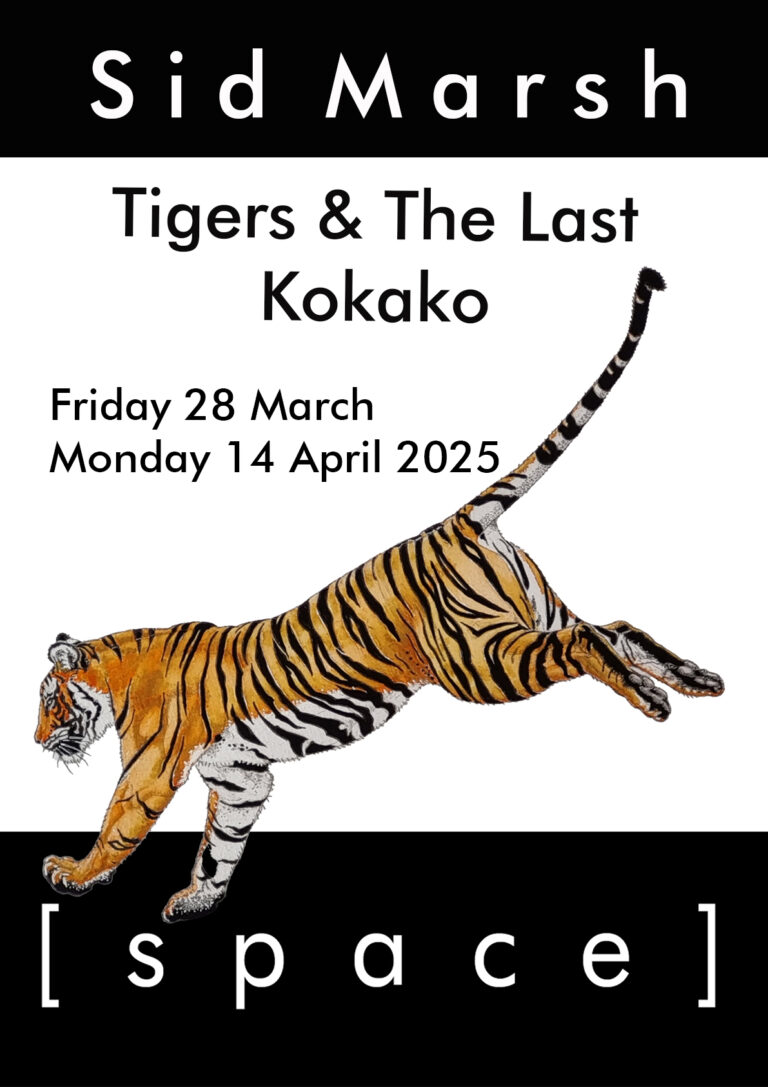
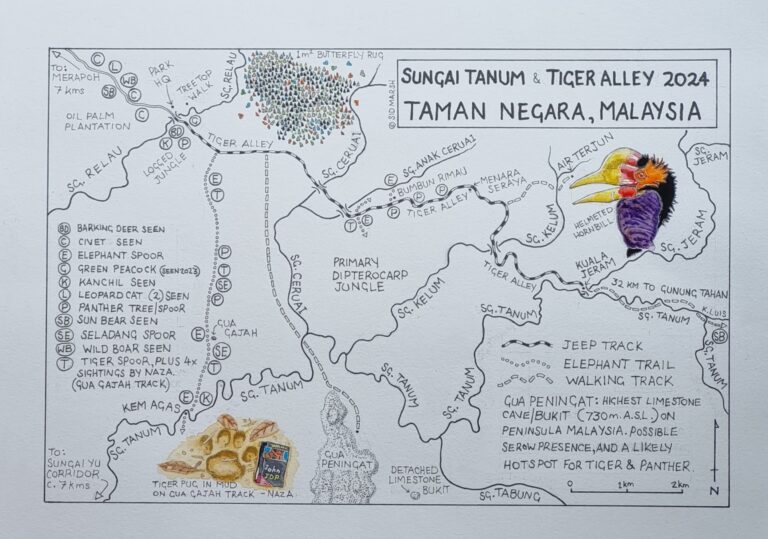
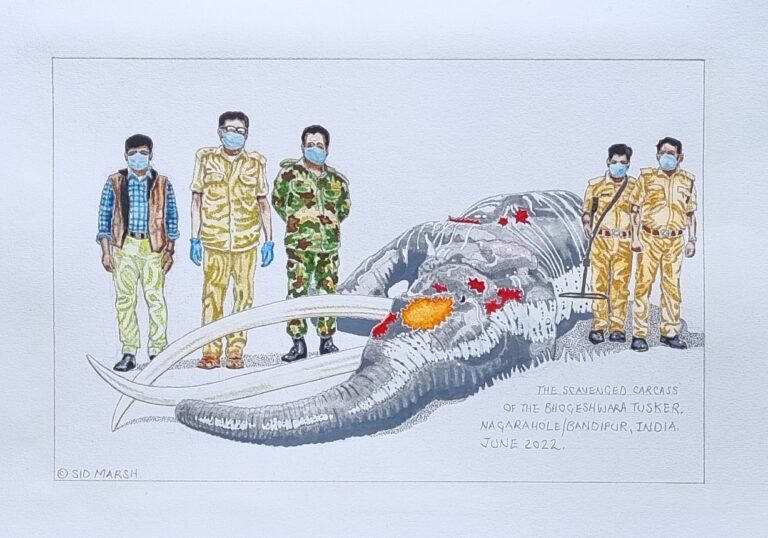
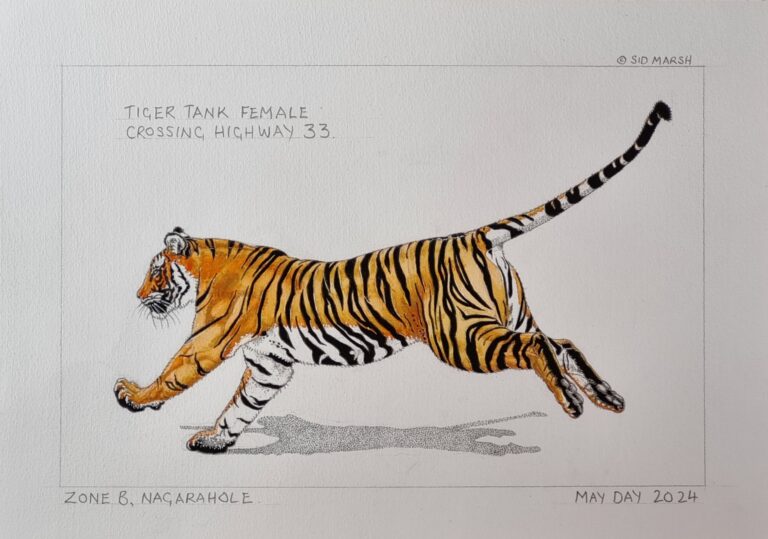
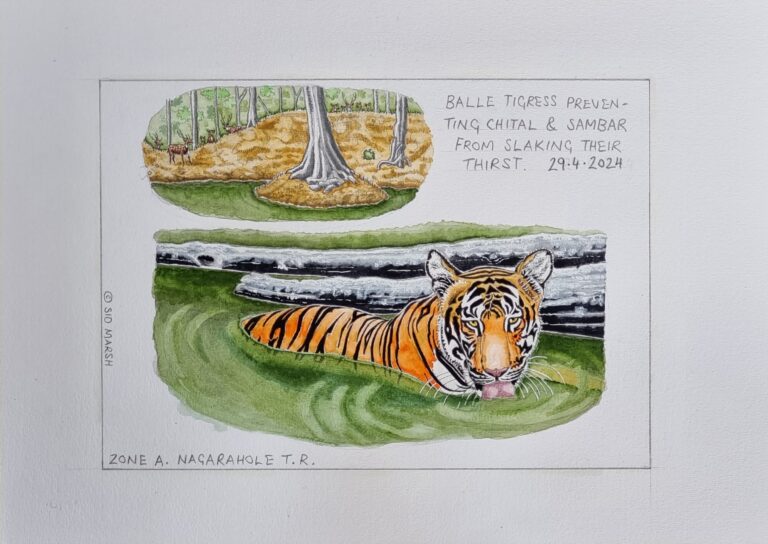
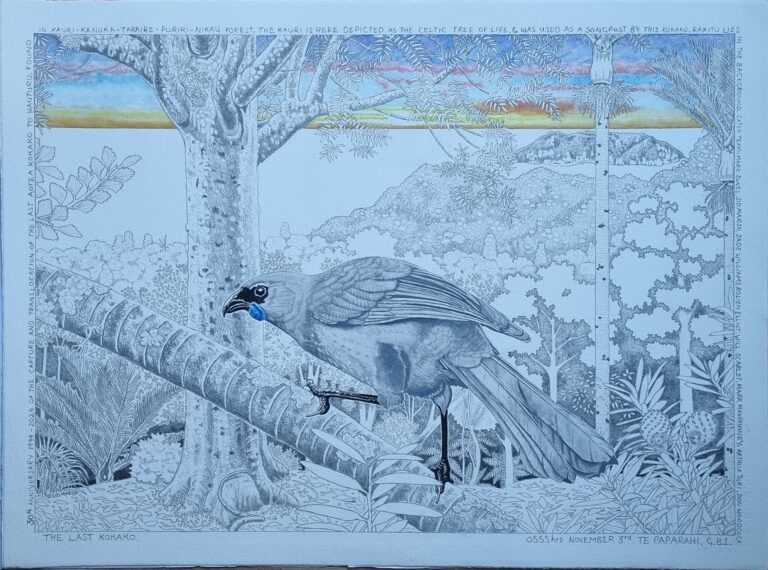
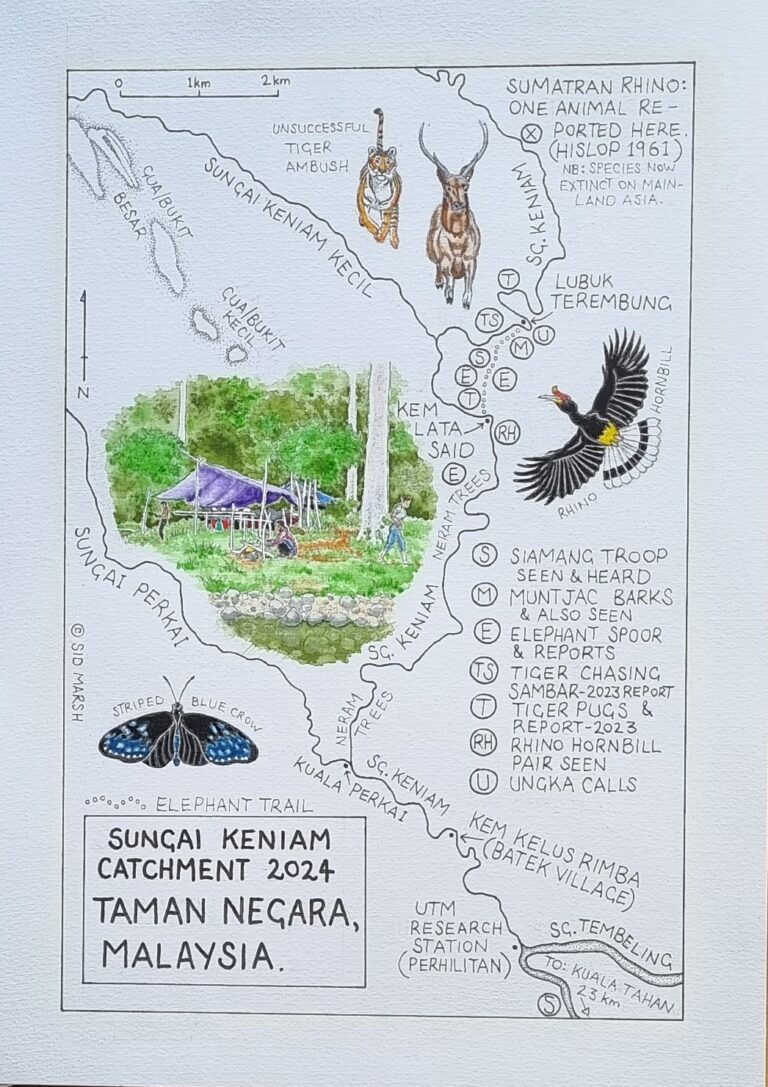
“Tigers & The Last Kokako”
An exhibition of Sid Marsh at [ s p a c e ] gallery
Friday 28 March – Monday 14 April 2025
[ s p a c e ] gallery is delighted to once again feature a Sid Marsh exhibition in its “small space” studio.
Sid Marsh, a multifaceted artist and writer based in Onetangi, Waiheke Island, has cultivated a rich and varied career that spans several decades and continents. Before dedicating himself to the arts, Marsh embraced numerous professions, including roles as a heavy machinery operator, soldier, diving instructor, and wildlife ranger. These diverse experiences have profoundly influenced his creative endeavours, infusing his work with a unique blend of adventure and introspection.
As an author, Marsh has an impressive portfolio of nine published books. His literary journey commenced with “Diver’s Tales” in 1991, offering readers a glimpse into his underwater adventures. This was followed by “Kiwi Hunter” in 2005, reflecting his deep connection to New Zealand’s wildlife. Demonstrating versatility, he ventured into graphic novels with “Crow of Wahreatua” in 2017. His most recent work, “Butterflies in Tiger Country,” published in 2024, chronicles over a decade of his close encounters with wild tigers in India and Malaysia, highlighting his commitment to wildlife conservation and storytelling.
In the visual arts realm, Marsh is celebrated for his intricate and detailed drawings and paintings. He exhibited previously at [ s p a c e ] gallery “It’s a jungle out there” in April 2019. “Pacific White,” was held in May 2024, at the Waiheke Community Art Gallery, showcasing works that document his global journeys and explorations, with a particular focus on aquatic themes.
Marsh’s life and career are a testament to his relentless curiosity and passion for the natural world. Whether through the written word or visual art, he continues to share his unique perspectives, inviting audiences to embark on journeys of discovery.
The show opens at [ s p a c e ] gallery on Friday 28 March and runs through to Monday 14 April 2025.
About [ s p a c e ] gallery
Located in the heart of Oneroa village since 2013, [ s p a c e ] gallery is open daily from 10am to 4pm. It showcases original paintings, drawings, sculptures, small bronzes and monumental works, indoor and outdoor pieces by 8 well established Waiheke artists.
https://www.spaceartgallery.co.nz/
For more information.
Please contact Olivier Duhamel on olivieroduhamel@gmail.com
or
Sid Marsh on kokakosid@gmail.com
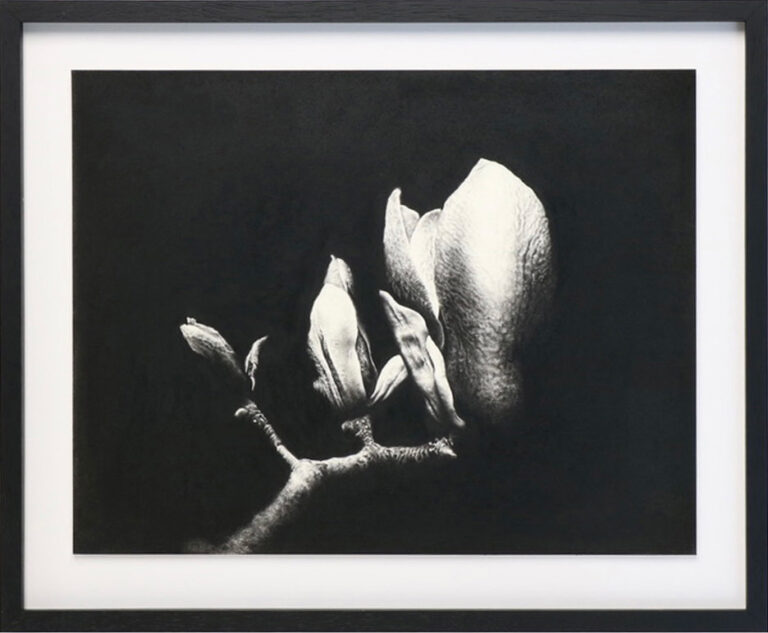
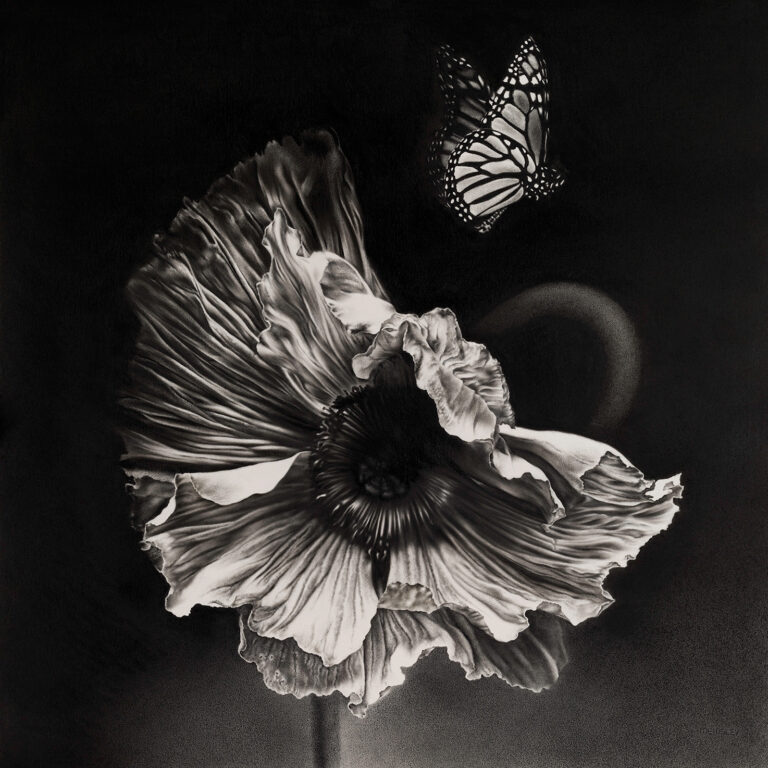
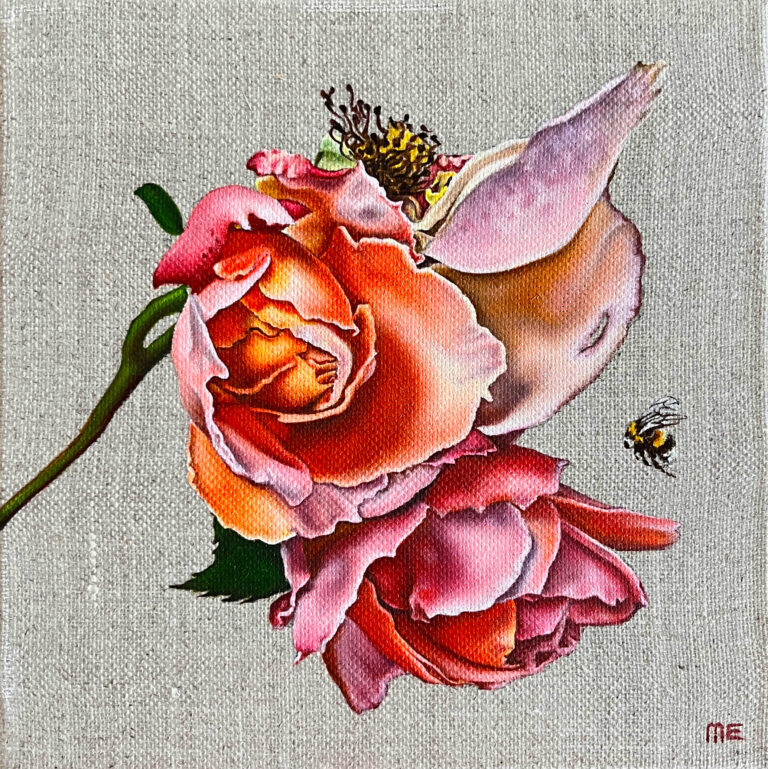
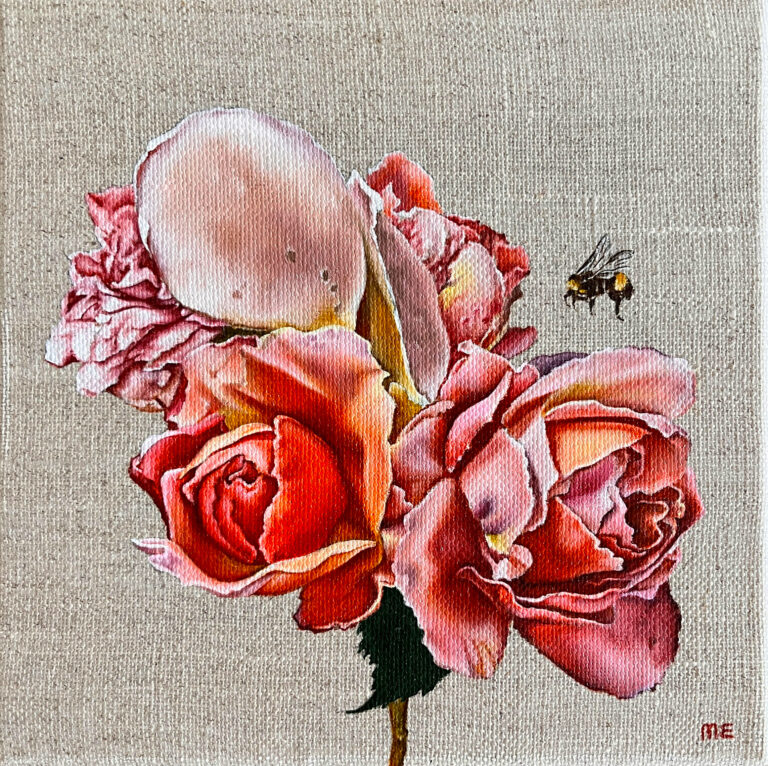
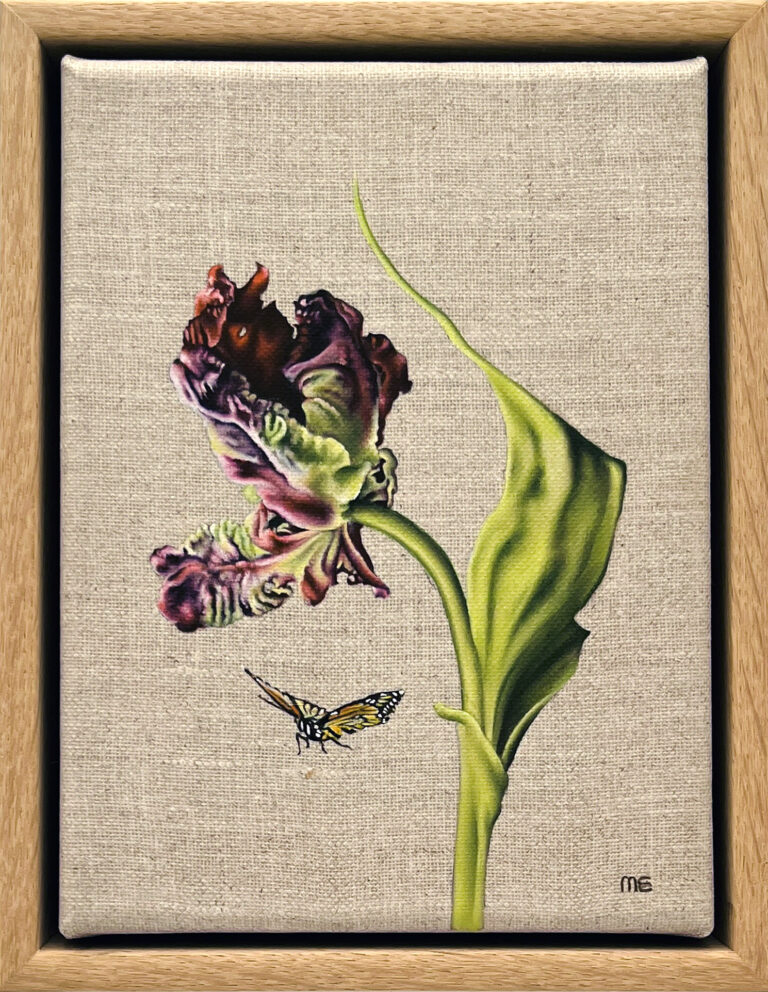
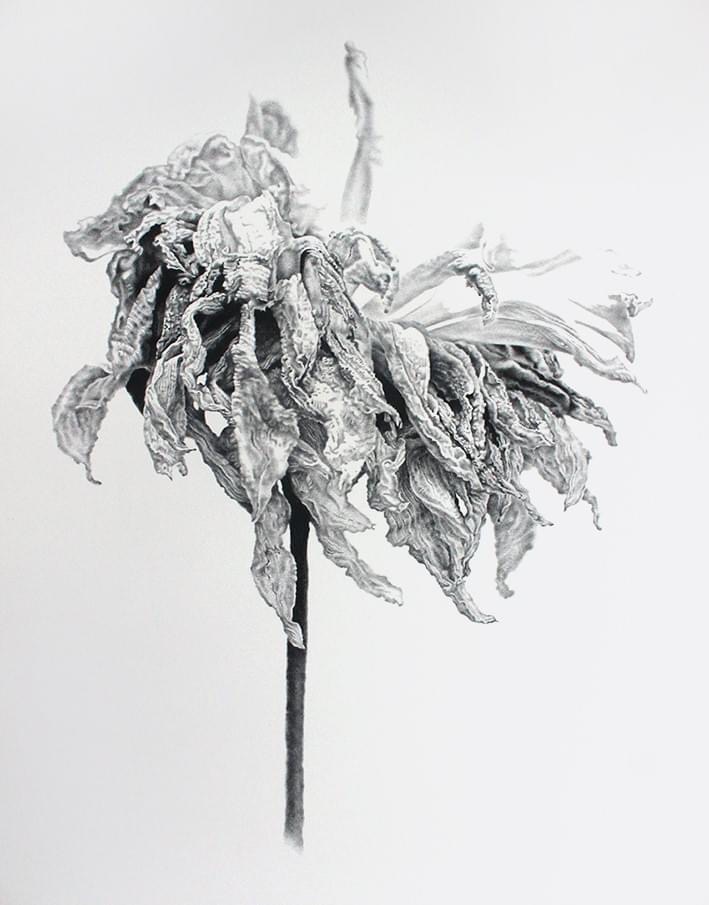
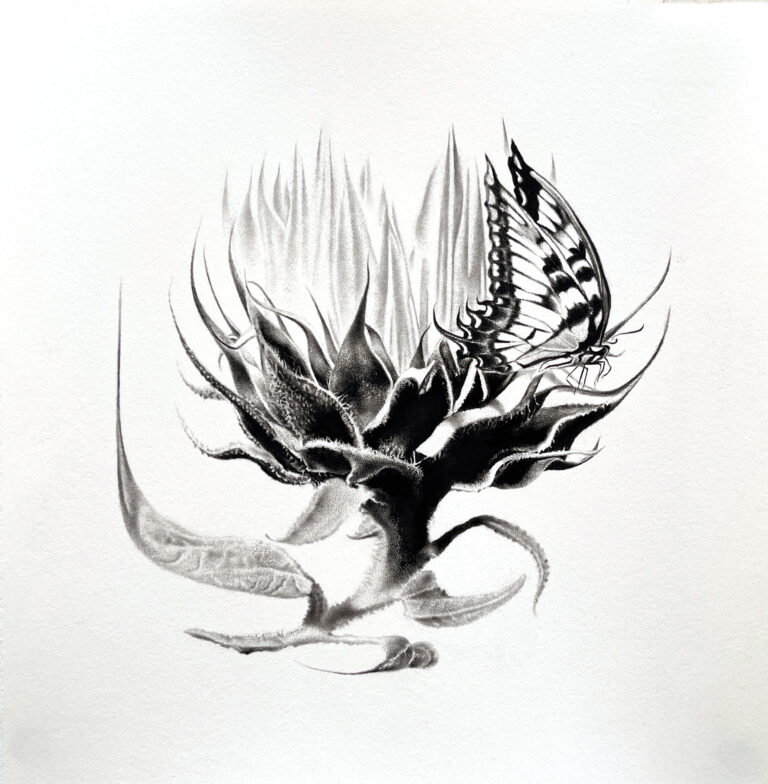
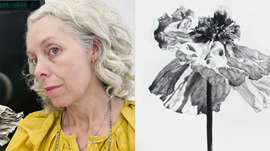
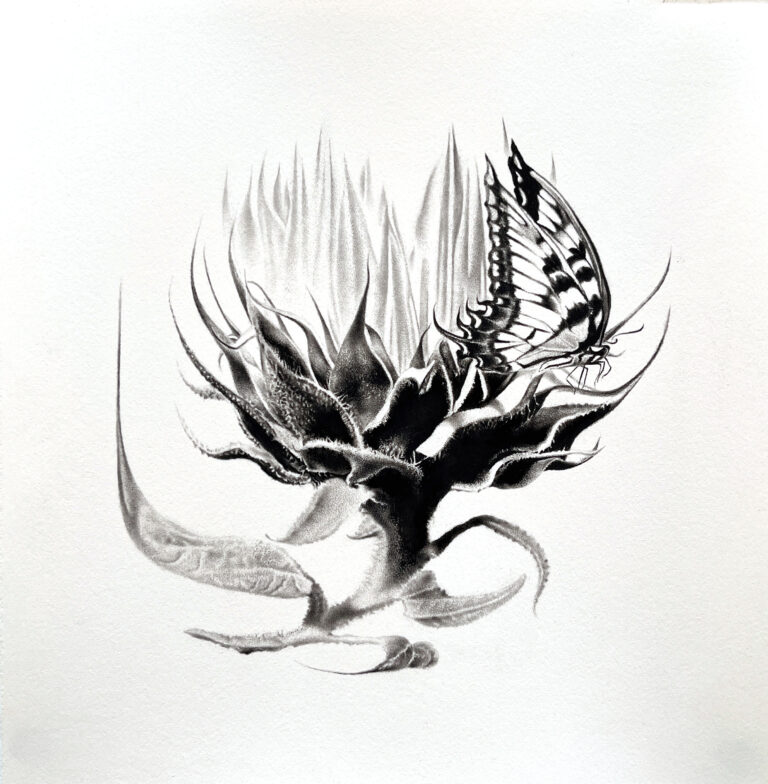
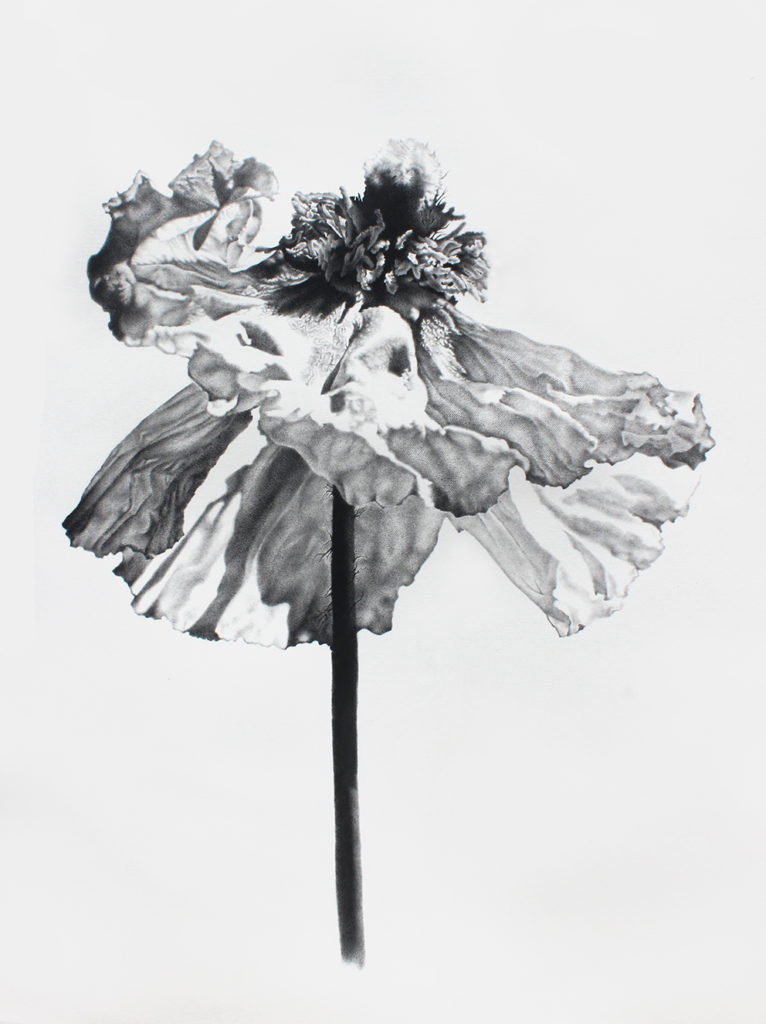
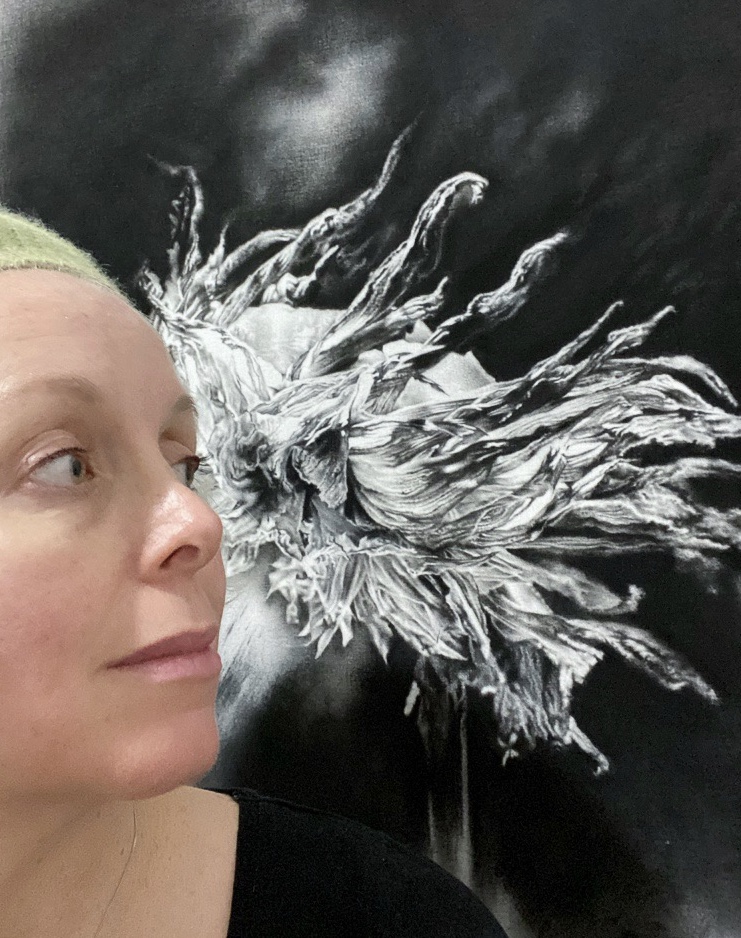
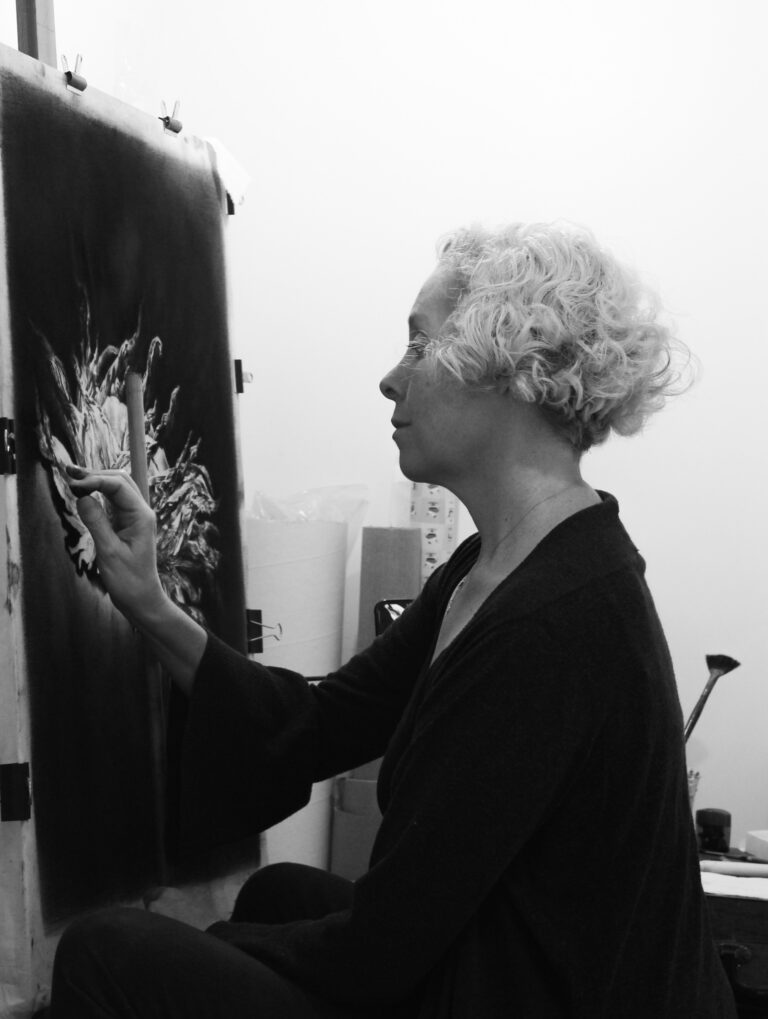
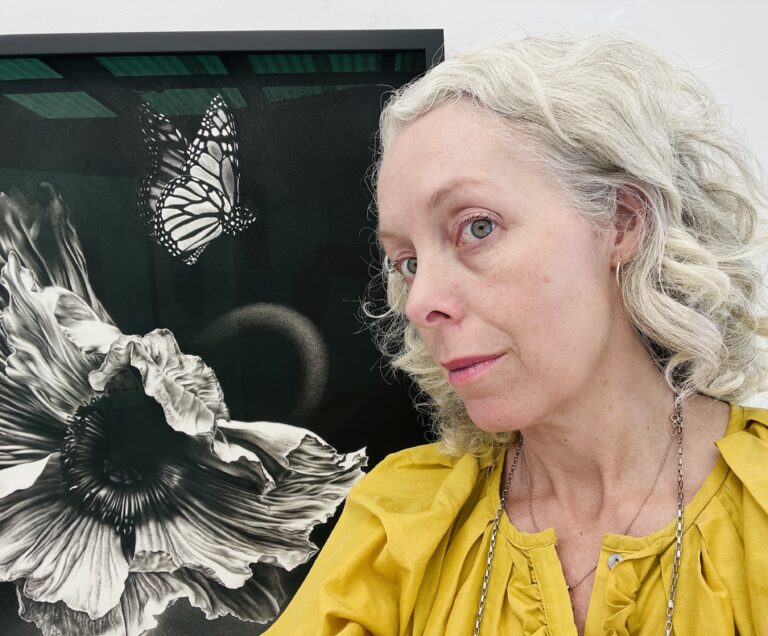
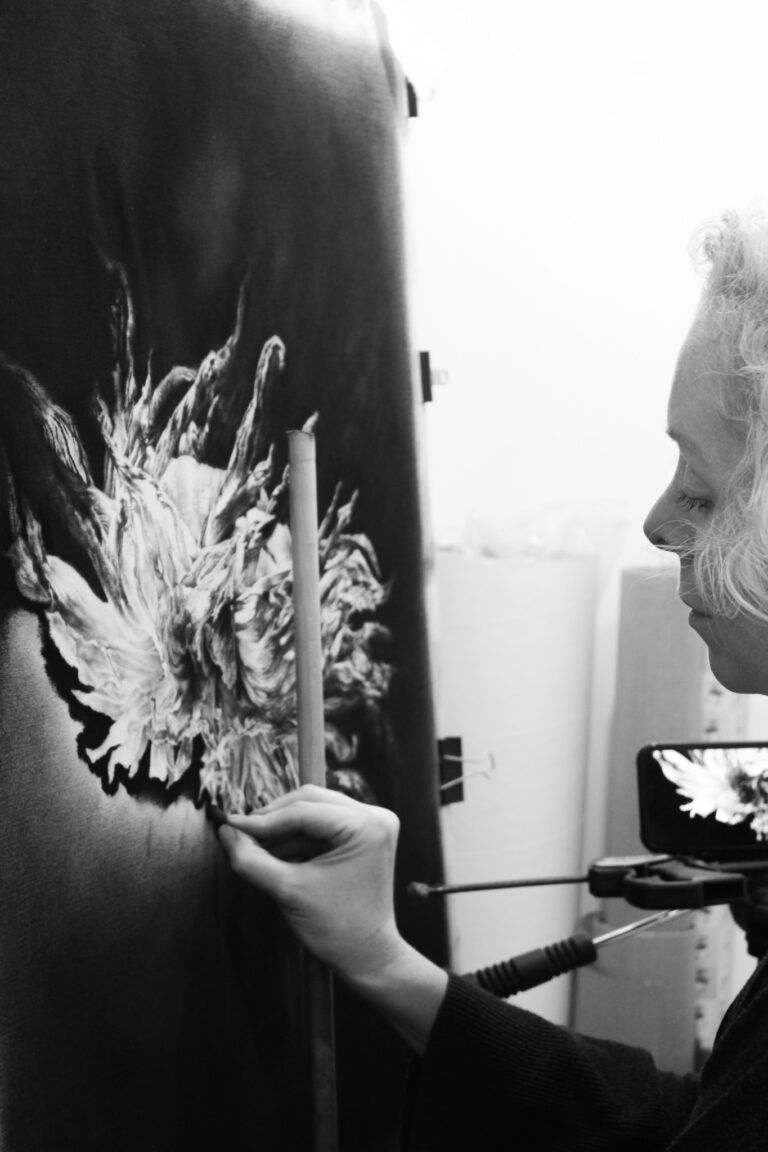
Gulf News, 6 March 2025
KO NGA MAHI TOI / THE ARTS
Flowers, impermanence and digital drama: the art of Margaret Emsley
Waiheke artist Margaret Emsley has recently joined the artist-run Space Gallery in Oneroa. With a fine arts degree from the University of Stellenbosch in South Africa, Margaret has enjoyed many years of success as a painter. Known for her meticulous botanical studies Margaret won the 2020 Michael Evans Award for a figurative work at the Walker and Hall Art Awards and the Zinni Douglas Merit Award and People’s Choice Award at the Walker and Hall Art Awards in 2022.
Margaret grew up in a household where art-making was actively encouraged. Her father’s work can be found in most public collections in South Africa, the National Portrait Gallery in London and the British Museum. Her brother and aunt are also established artists. “We’d have family holidays and we’d always go out hiking in nature and my dad, from when we were very little, would give us things to draw. We’d do watercolours at the beach and that kind of thing, so it was very much a part of life growing up.” It’s a pattern that she and her husband have established with their own children, hiking around New Zealand and sketching in the outdoors.
Margaret explains that she photographs flower subjects for her drawings and paintings at different stages in their short lifespans as well as at different angles in the light. “I then digitally deconstruct the flower, stems and leaves and then reconstruct them, exaggerating and combining elements. My paintings and drawings typically take about a month to six weeks to complete. It takes time to build up the intensity and detail. I don’t produce many paintings in a year but I have recently started getting them made into prints.” Margaret described how her brother and father would spend hours adjusting the lighting and camera settings in order to take perfect images for painting that were wonderful photographs in their own right. Her process is different in that her flower images are often reconstructed in Photoshop.
“It’s all about dissecting the parts. I’ll take the stem away from the flower. I’ll take a leaf away from the stem. I’ll say ‘I want that petal’ or I’ll double up the petals or take them from an earlier version of the flower. It can take a week sometimes putting an image together in Photoshop prior to painting.” Bending and warping elements of the flowers to create dreams allows Margaret to create new images that, while bearing a resemblance to her referent images, are unique in their form. In this sense her work sits within what has been described as a ‘post-medium condition’.
The 1970s and 1980s were an era when many believed painting had exhausted its potential. However, innovative artists breathed new life into the medium by incorporating photography and digital techniques. These pioneers forged a new path, creating hybrid artworks that blended traditional painting with emerging technologies. Their efforts redefined the boundaries of art, positioning their creations at the intersection of multiple mediums and rejuvenating painting in the process.
Margaret’s flowers are sourced from Waiheke’s Nourish Gardens based in Owhanake Bay, and her preference is for flowers that are past their prime. “I love all the imperfections and scarring. It’s about not erasing and touching things that are worn out. It’s a way of thinking that we are all part of a much bigger picture, that we are all part of that energy. I often find when I think about these things it takes me out of myself. I think we tend to be so into our problems it’s very therapeutic. Of course I love the forms of the flowers and love to spend hours at the easel.”
Margaret sees flowers as symbols of impermanence and insects as symbols of transformation. “They remind us of constant change,” she said.
The charcoal medium allows me to explore the tension of opposites: light and shadow and internal and external self. Lately I have been influenced by the early botanical artists who would sometimes deconstruct the flower, stem and leaves in order to portray each of its parts.” Often in the work of early botanical artists their proportions were distorted and forms were exaggerated.
Originals and limited-edition fine art giclée prints of Margaret’s work are available for purchase at Space Gallery, 114 Ocean View Road.
Paul Radford (1957-2024) was undoubtedly a prominent artist in the island creative community and in New Zealand. He had a considerable following and a well-established reputation. But above all, he was all simply a wonderful friend.
As an artist he excelled as a brilliant and tasteful colourist, always avoiding offensive or loud juxtapositions. He was also very tenacious and thoroughly explored a particular theme before moving on to his next source of inspiration. Over his long and prolific career, his attention moved from floral motifs, to heads, female forms and sensuous guitars, birds, historical icons, ultimately culminating in his playfully insolent stylised figures dancing joyfully, infused with both sarcasm and sensitivity, over his trademark made believe wooden boards. The culmination of his mastery and artfulness, honed over decades of diligent work.
Paul had always been painting. In his own words: “This is what I do.” He lives on through his paintings and sculptures, held in many public and private collections around the world.
As clearly reflected in his art, he was man of knowledge, class, charm, nuances, taste, style and finesse… a gentleman of distinction.
Olivier, Kiya, Jenny, Mary, Maria, Katie and Jay.
Paul Radford (1957–2024) was an Australian-born artist who spent most of his life in New Zealand. He graduated from Elam School of Fine Arts in 1977 and held his first solo exhibition in Auckland in 1979. Over his career, he presented more than 30 solo shows and worked extensively as a scenic artist in film and television.
Radford’s artistic style evolved over time, often reflecting a sense of disquiet or anxiety about human existence. In the early 1980s, after traveling to the UK and Europe, he created works featuring cartoon-like figures and graffiti that evoked contemporary urban life, infused with droll humor. Later, he combined these figures with elements inspired by prehistoric art, resulting in unique series of paintings and sculptures.
His versatility extended to various media, including bronze, glass, polystyrene, plywood, and driftwood. Notable works include “Prodigal Child,” showcased in the 2011 Sculpture on the Gulf exhibition and now part of the Wallace Arts Trust Collection, and “Nil by Mouth,” a piece commenting on society’s dependence on pharmaceuticals.
Radford’s contributions to art are held in high regard, with his works featured in collections such as the Auckland Art Gallery, Christchurch Art Gallery, and Te Papa Tongarewa. He passed away in 2024 after a long battle with cancer, leaving behind a legacy of thought-provoking and diverse artworks.
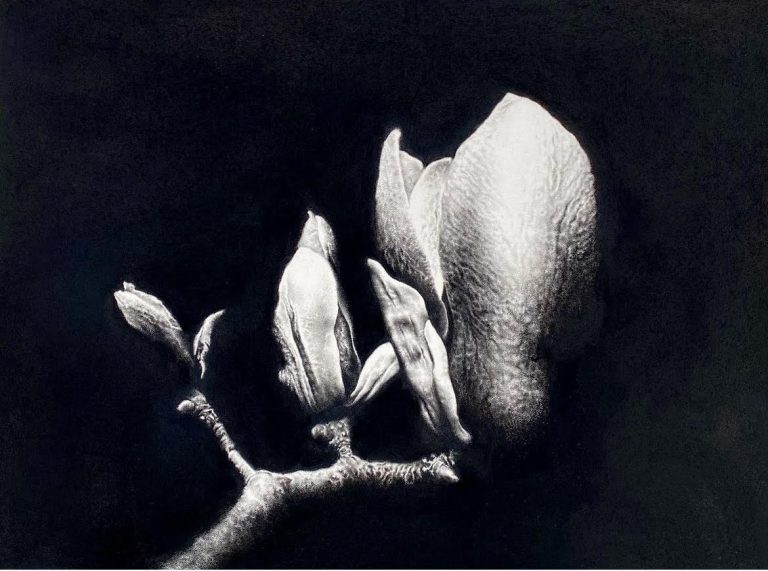
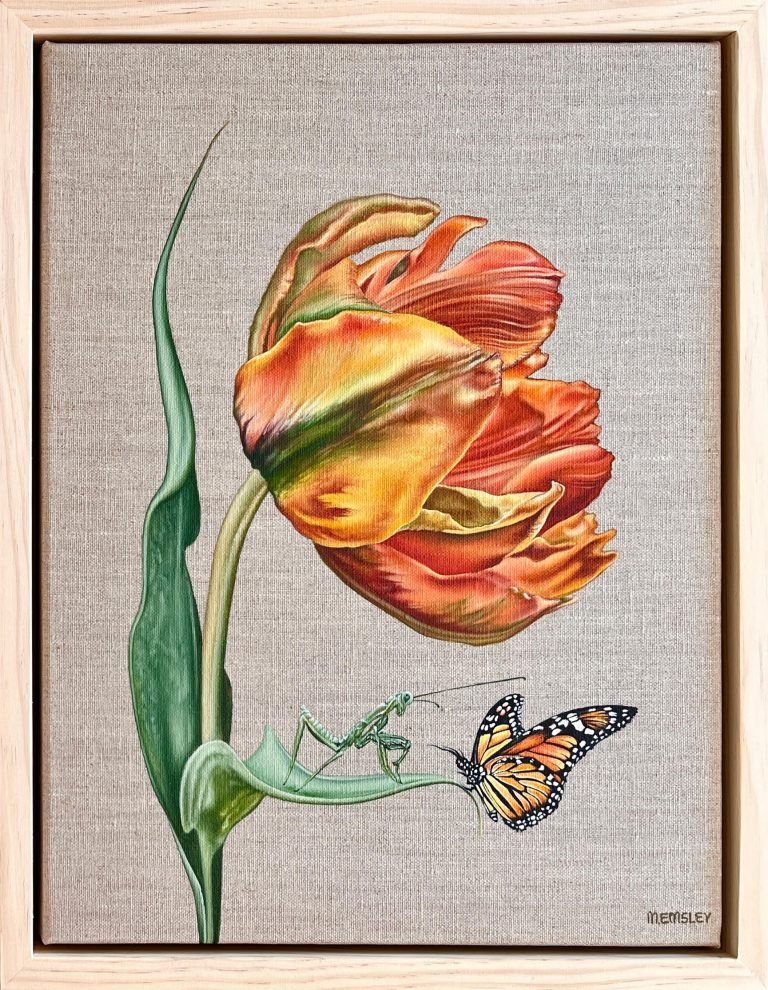
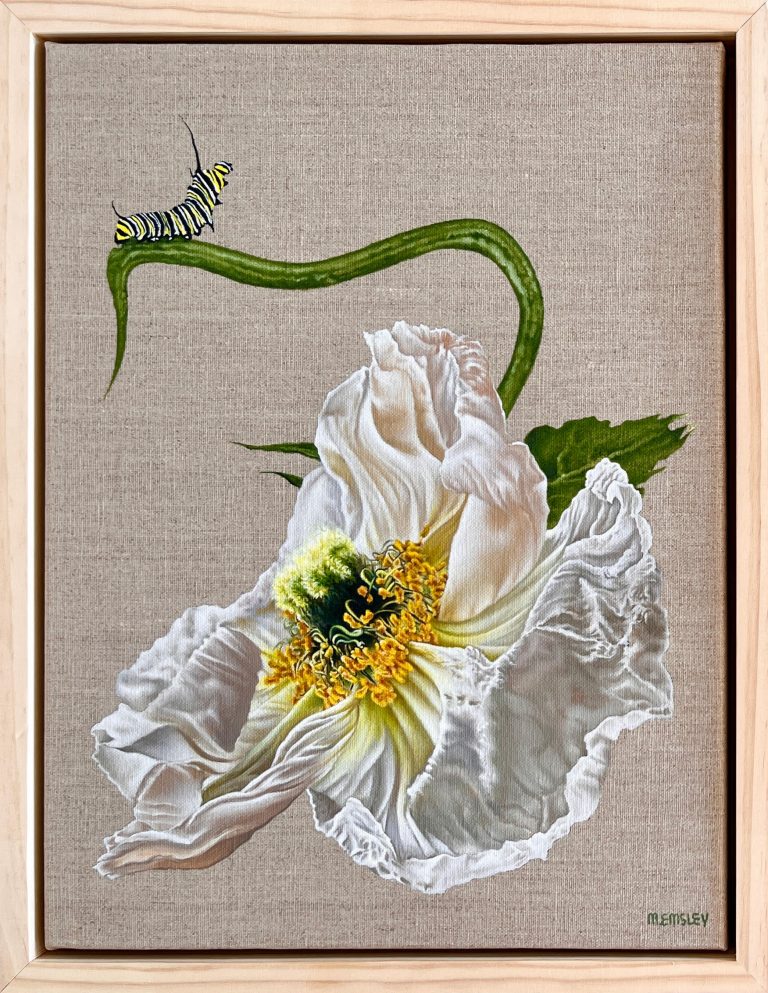
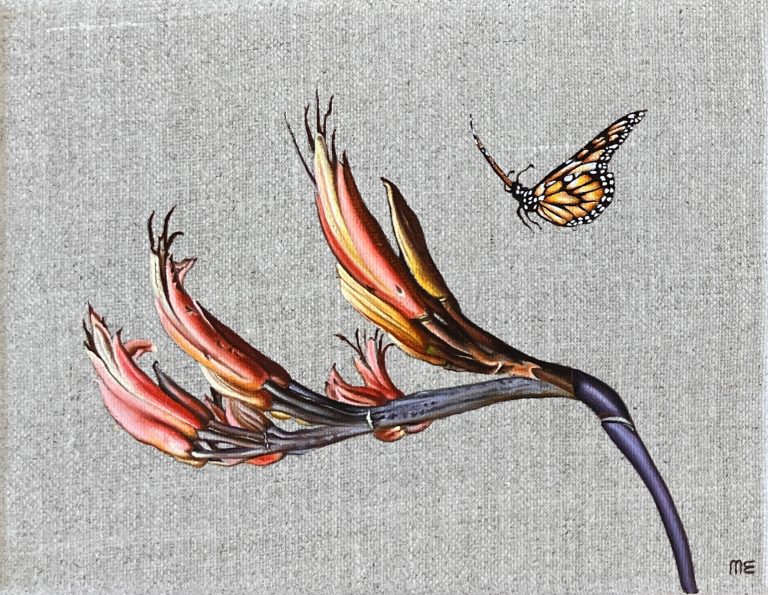
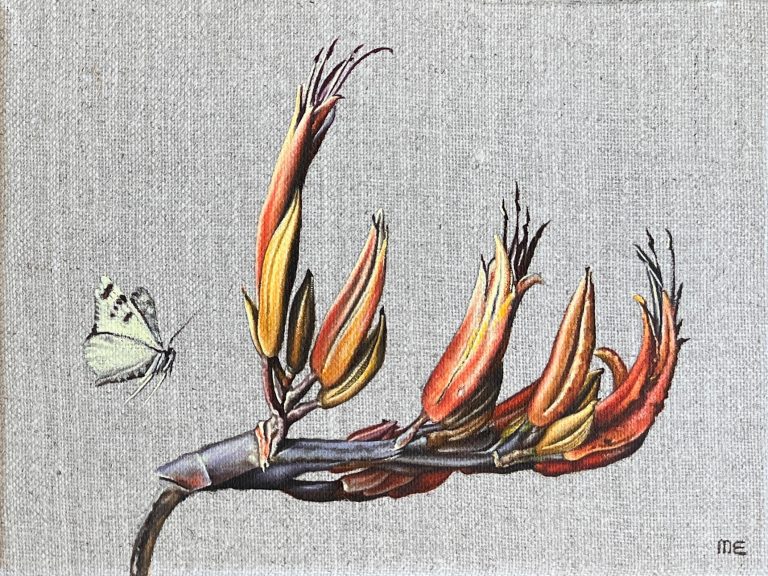
We are pleased to welcome Margaret Emsley in our small family of local Waiheke artists.
Please visit the gallery in Oneroa and admire her delicate and intricate floral oil paintings and delightful charcoals.
Margaret has a degree in Fine Art from the University of Stellenbosch in Cape Town. A long-time island resident, she has been a regular exhibitor and has established a strong following and reputation having been a finalist and award winner at the Walker & Hall Waiheke Art Awards Exhibitions.
Check our calendar to see on which day you can meet her at the gallery.
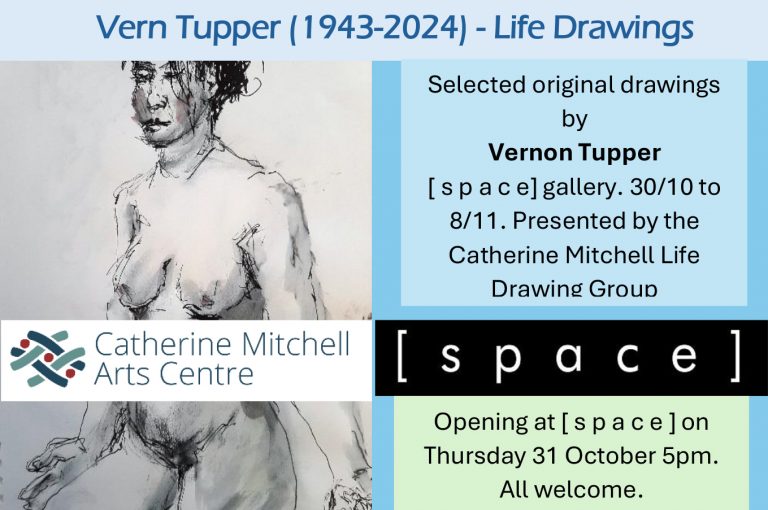
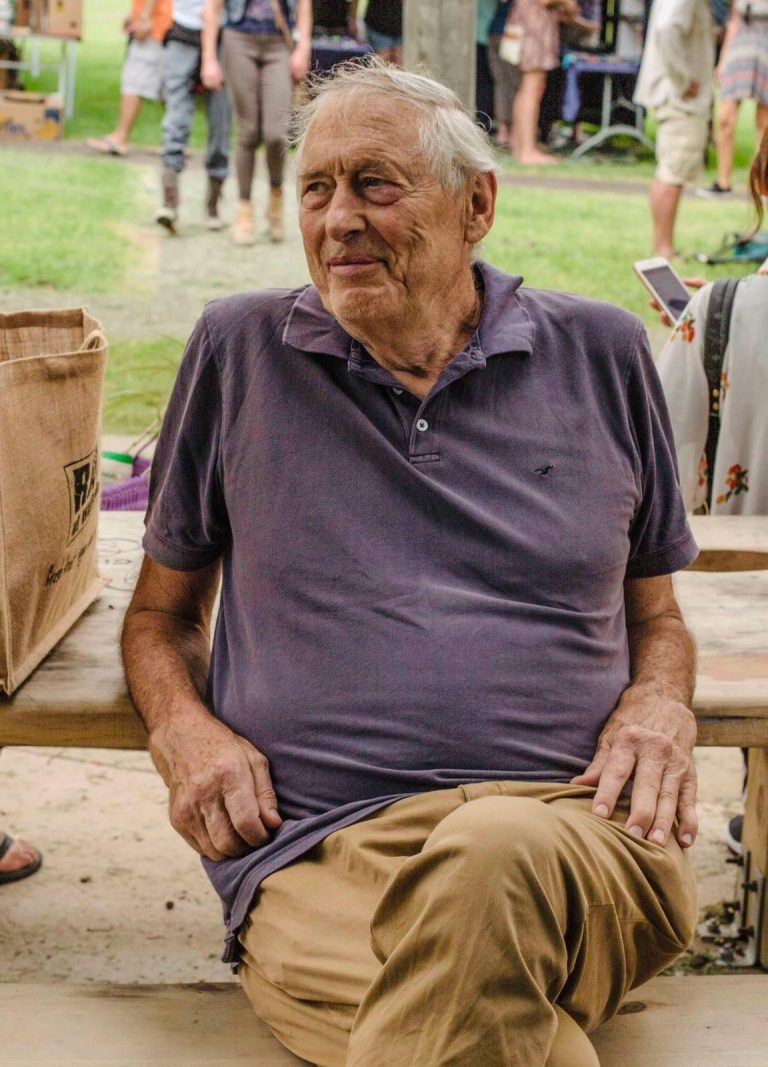
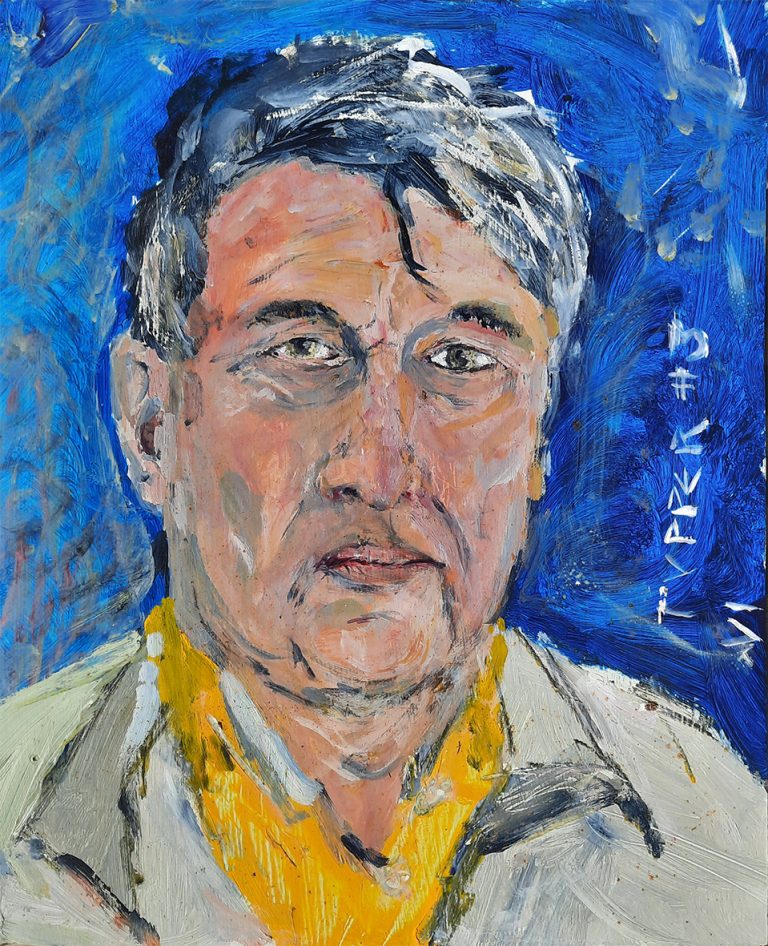
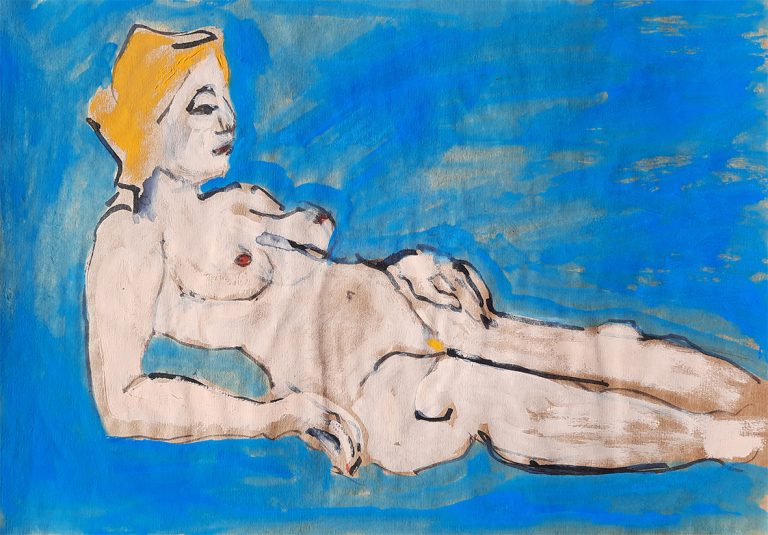
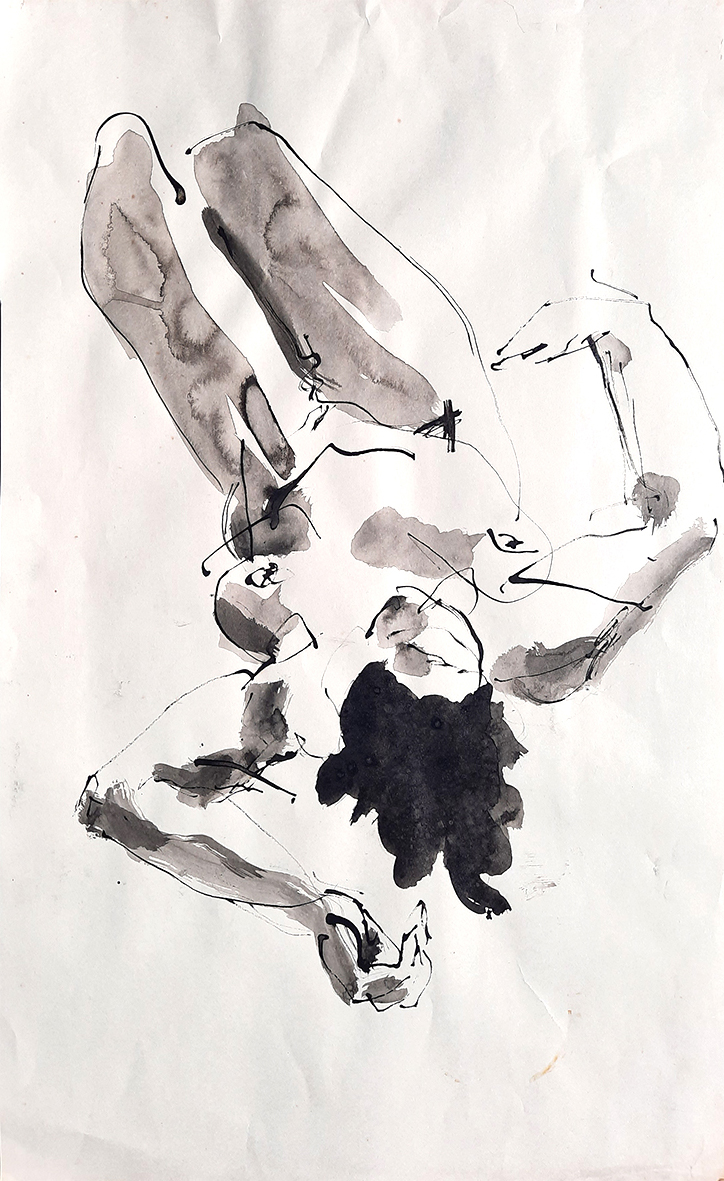
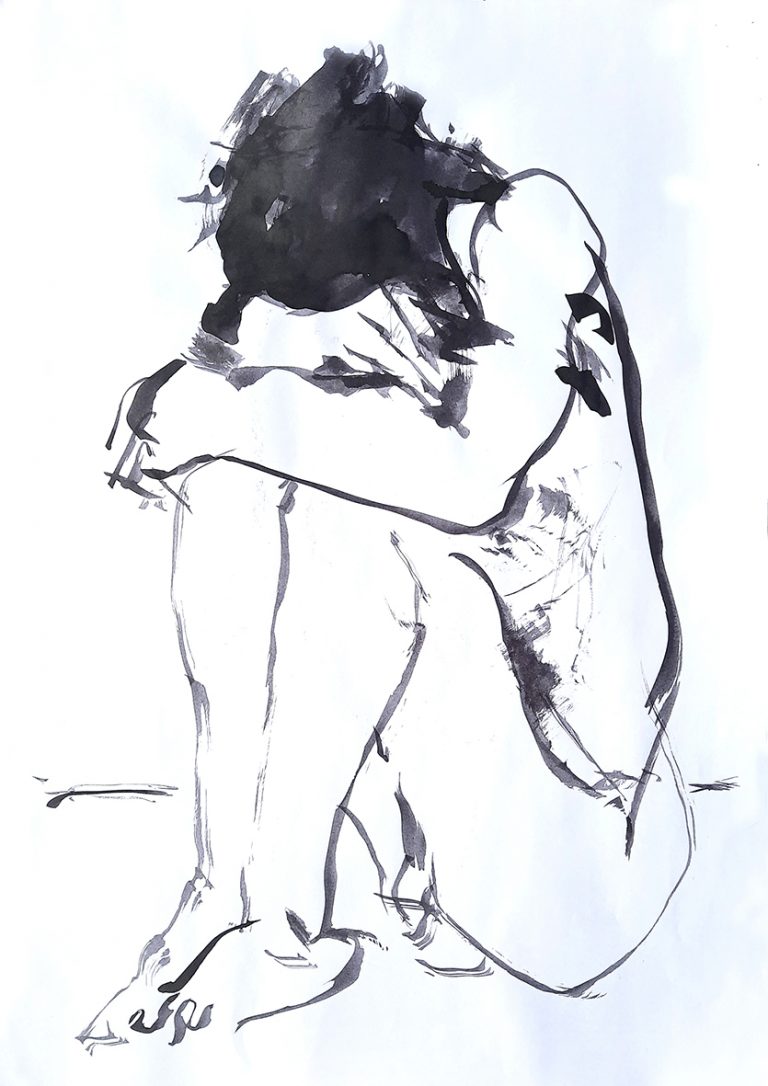
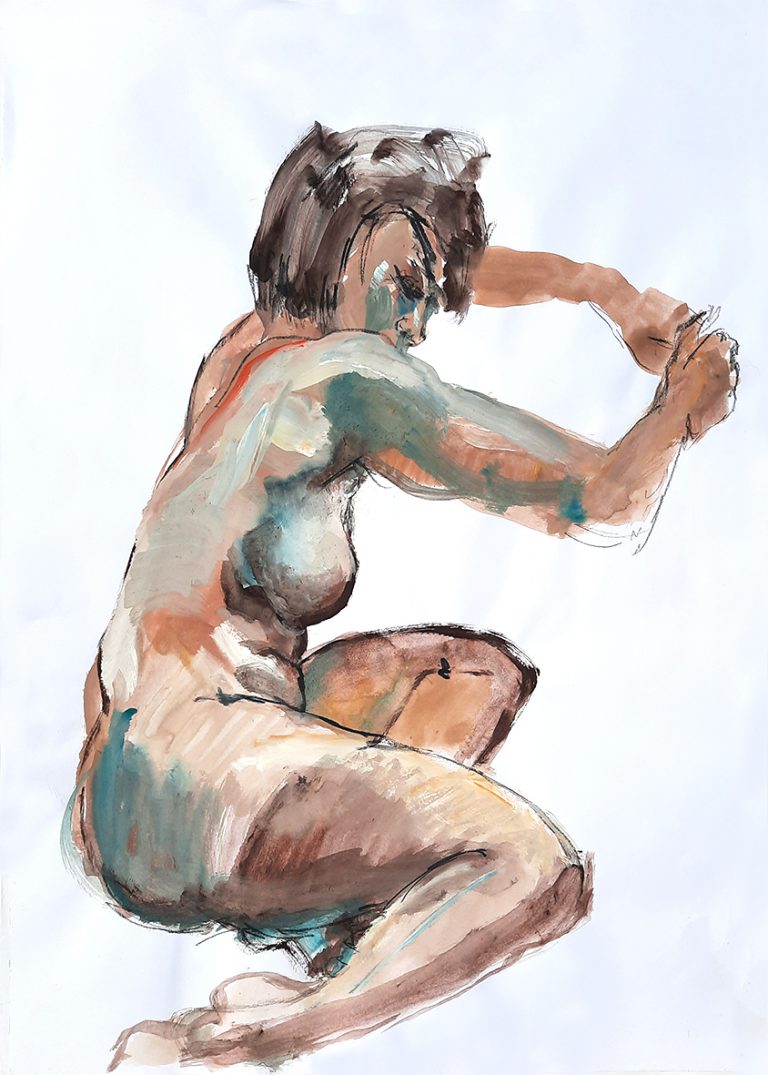
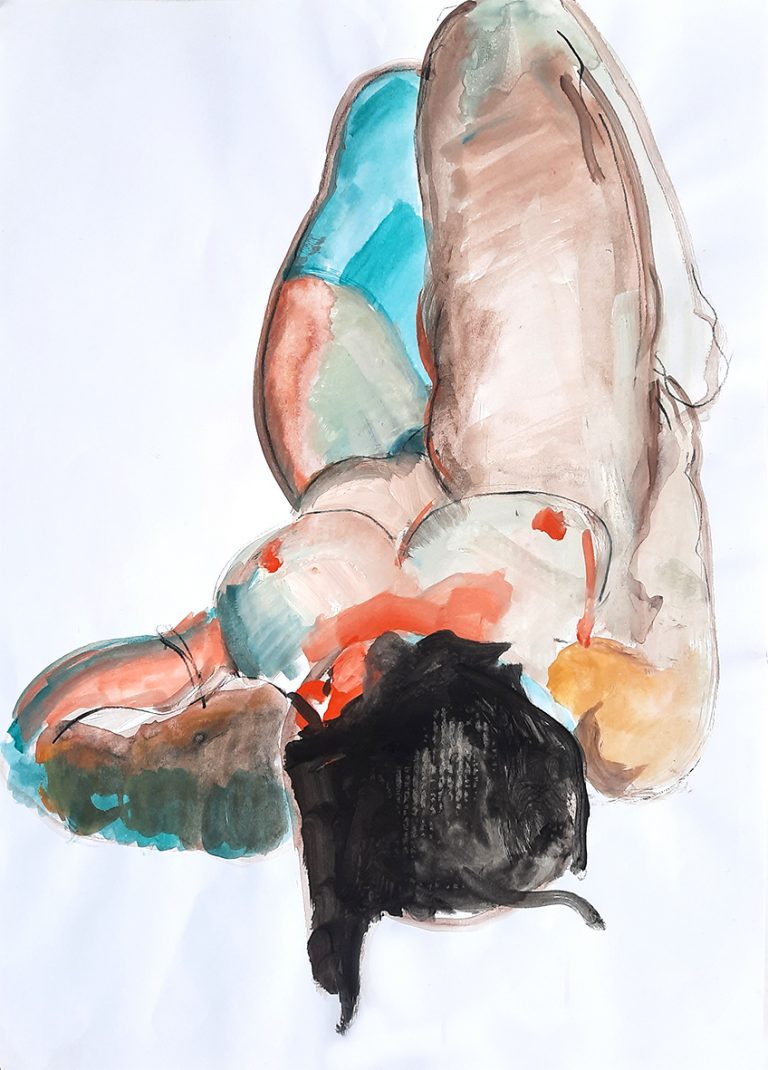
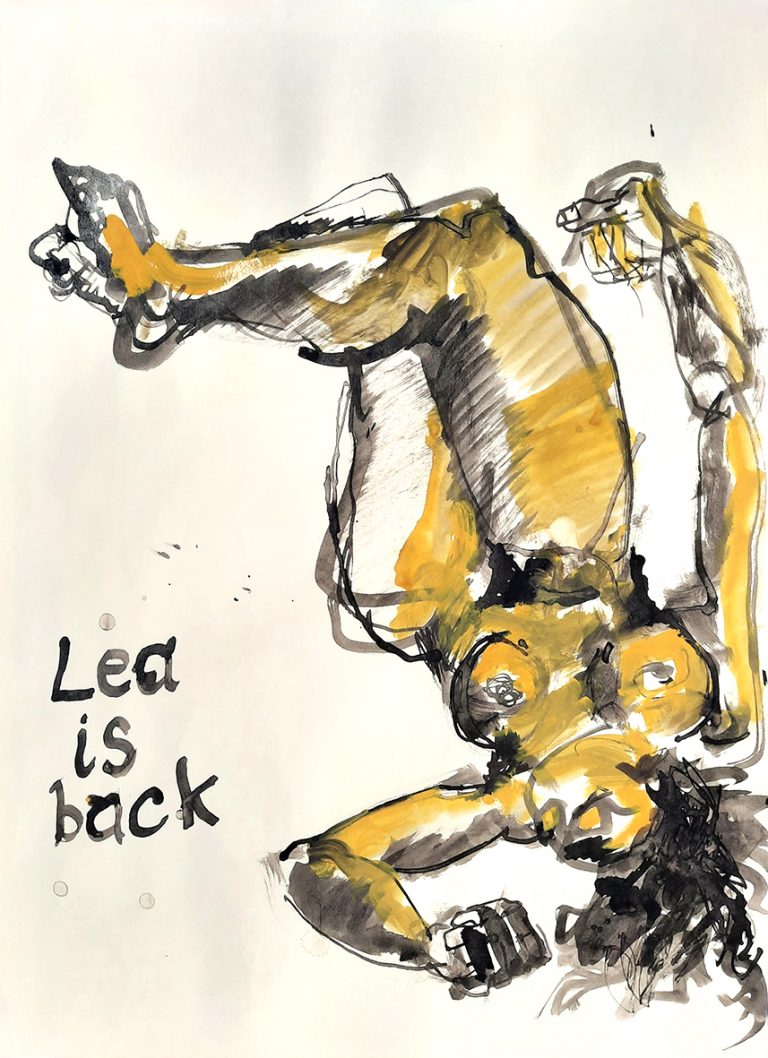
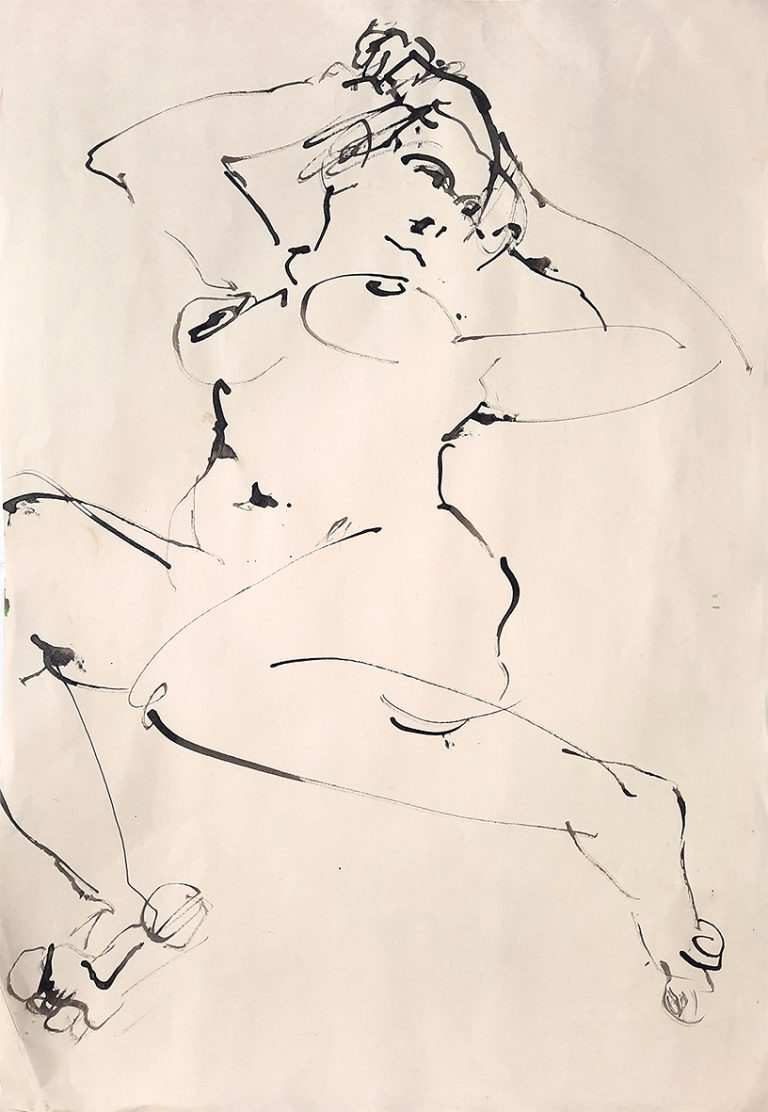
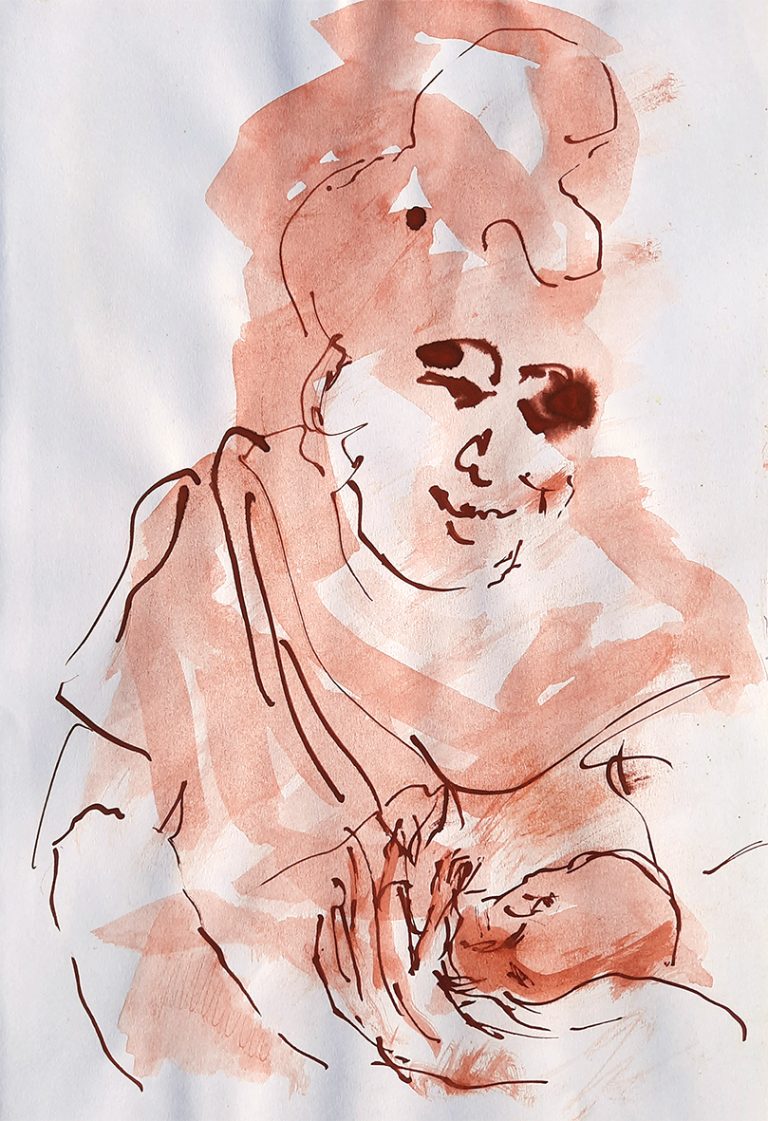
Vernon Tupper ( 22 February 1943 – 13 September 2024), a longtime resident of the Island, was a dedicated member of the Catherine Mitchell Life Drawing Group. For over forty years, he was a prolific and gifted artist, known for his emotional and delicate portrayals of the human form. A student of David Wilson at the Macquarie Art School, Bathurst, Vernon explored various mediums, including charcoal, pastels, and watercolours, but truly excelled in ink, creating his signature bold black-and-white images. These weekly drawing sessions at CMAC in Ostend became a vital part of his social life, and he is deeply missed by his artistic community on the Island. In tribute to his legacy, his fellow artists are organising an exhibition featuring a selection of his most representative works. While it’s often said that artists receive recognition posthumously, Vernon will forever remain alive in our memories—not only for his art but also for his gentle spirit, vast knowledge, love of jazz music, and delightful sense of humour.
The show will run from Thursday 31 October till Friday 8 November at [ s p a c e ] gallery in Oneroa. Opening function on Thursday 31 October 5:00pm All welcome.
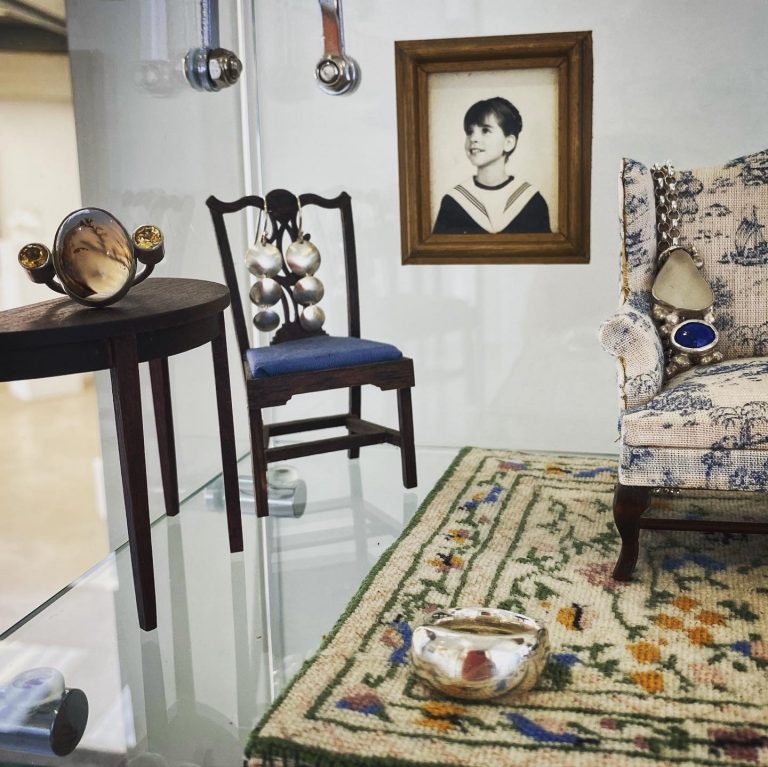
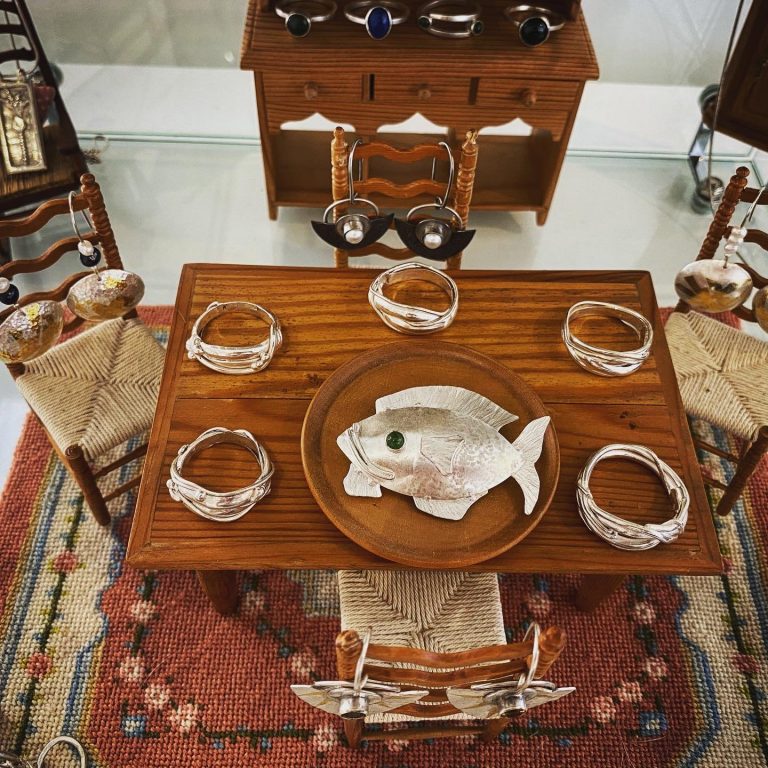
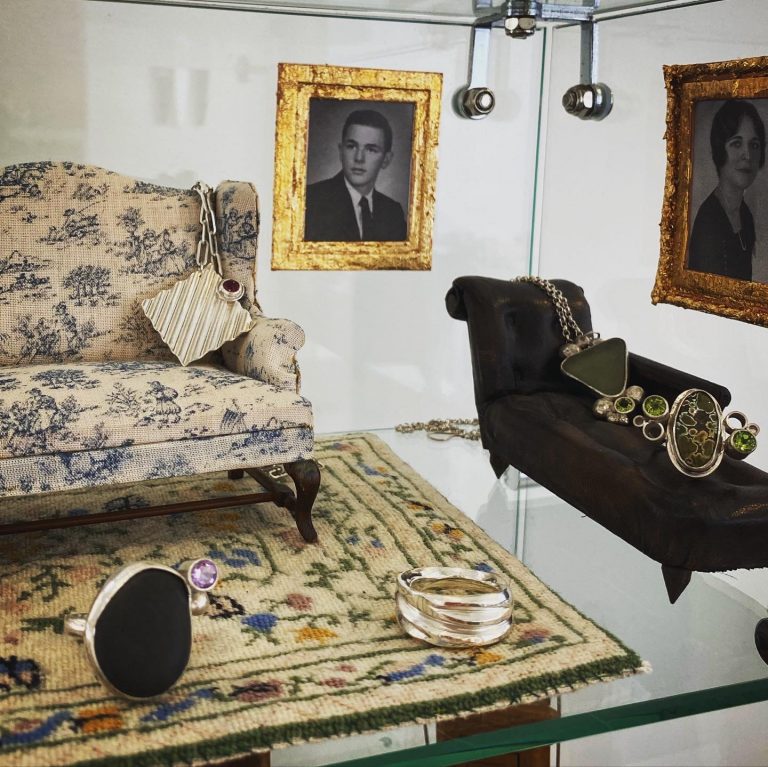
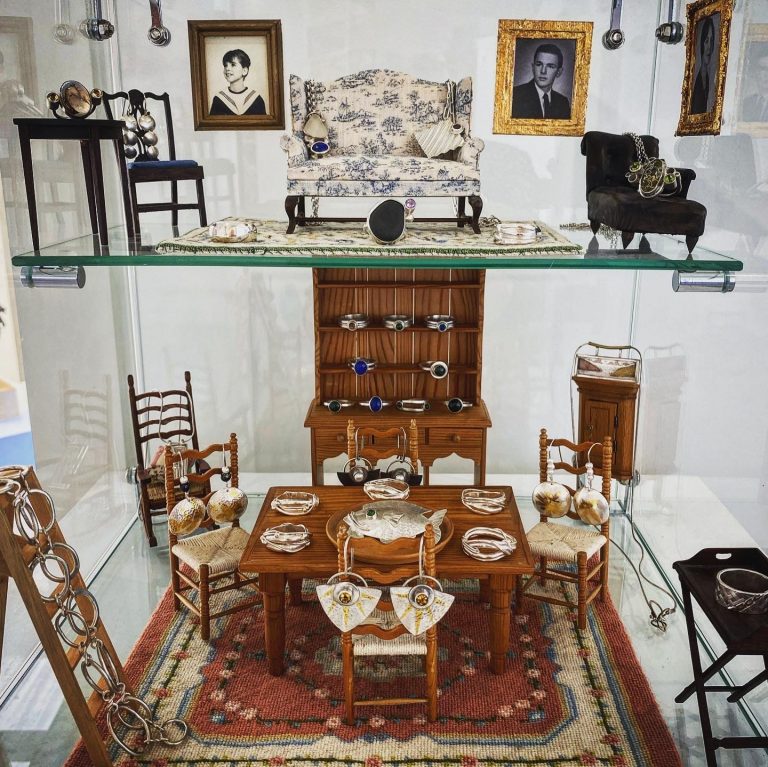
at [ s p a c e ] , Jenny Mason is displaying her jewelry inside a glass cabinet with charming miniatures. Here is the story:
“People often ask me how I got into making jewellery, and whether anyone else in my family was a jeweller. I’d always answered that there weren’t any other jewellers in the family, but then it occurred to me that my passion for working at a small scale is something I inherited from my father, and which he in turn had inherited from his mother who loved to create fine needle work.
As a child I was fascinated by his intricate model boats, steam engines and, the pièce de resistance – a fabulous dollhouse for my 7th birthday. His workshop was a trove of tiny treasures in drawers and boxes, which I was sometimes allowed to plunder. And every birthday and Christmas there would be another tiny piece of furniture to add to the house, made by his hands. And if I was lucky my grandmother would also give me a handmade needlepoint persian rug to complement the furniture.
So, I thought it would be fun to display 3 generations of miniature handwork in one case, along with portraits of the makers, myself, my father David and my grandmother Margaret.”
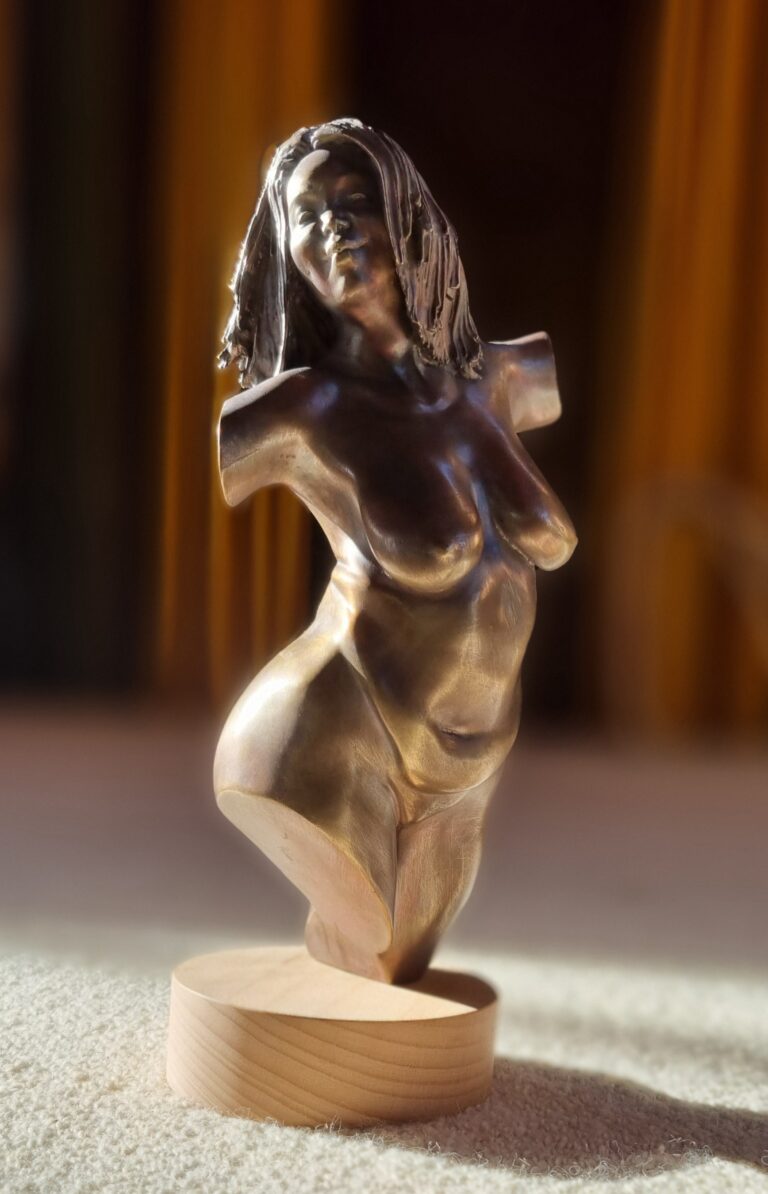
This 25cm tall small bronze torso “Gigi” has been shoplifted from [ s p a c e ] art gallery in Oneroa, Waiheke island, Auckland, New Zealand sometimes between Friday 1 December and Sunday 3 December 2023.
The theft has been reported to the NZ Police, report number OR-1375166N.
If you have seen this piece, please contact me on olivieroduhamel@gmail.com
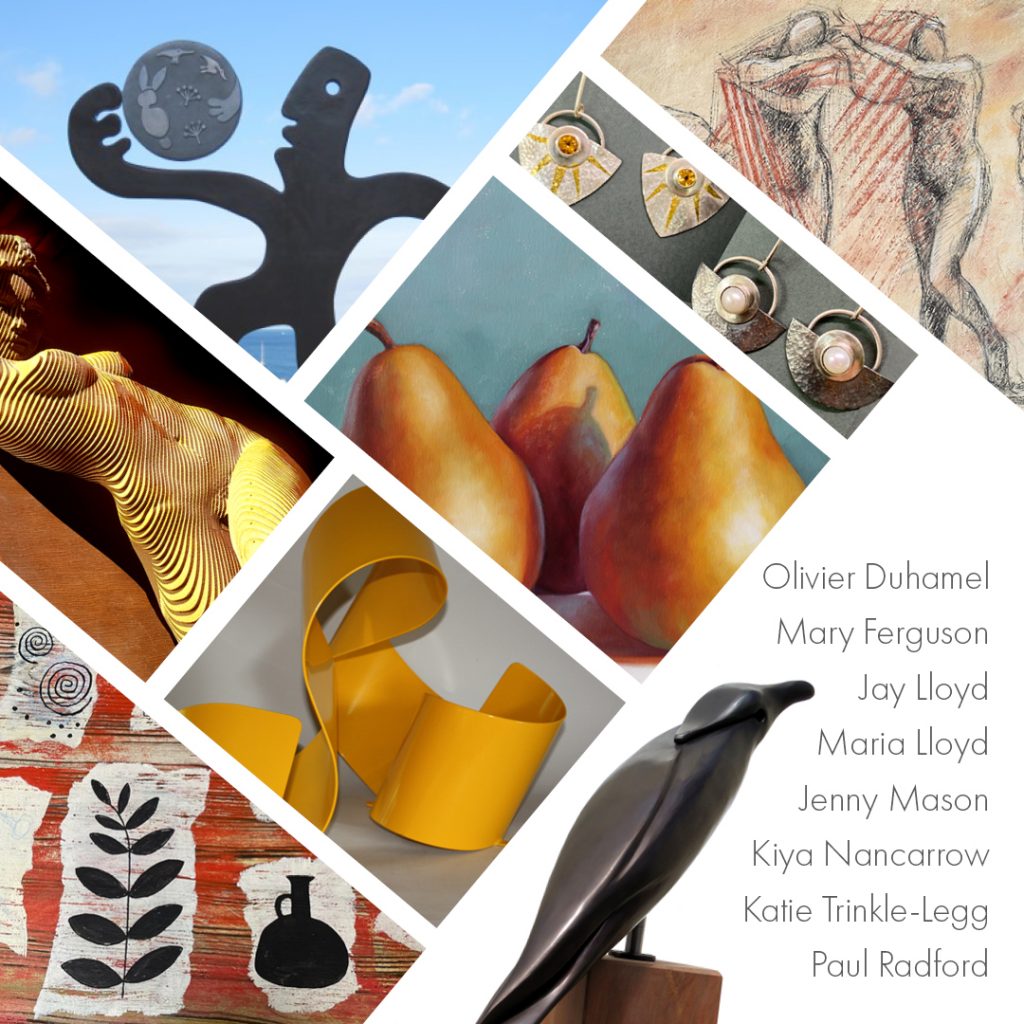
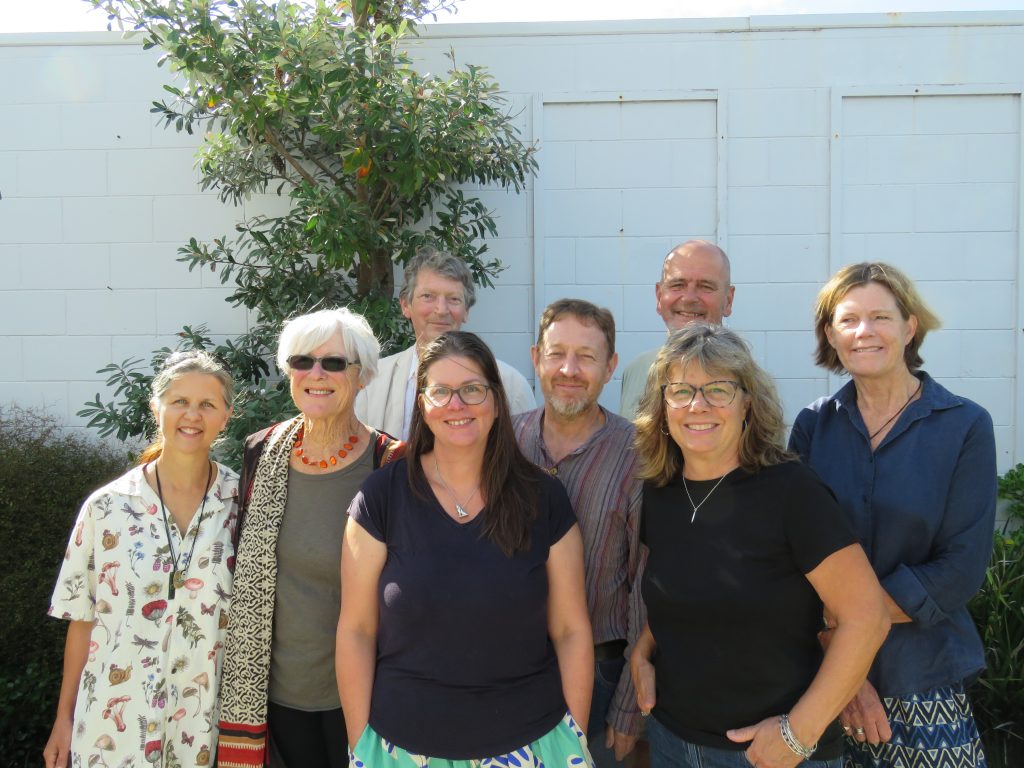
[ s p a c e ] Art Gallery celebrates its 10 years anniversary.
One of Waiheke’s most enduring art galleries is celebrating its 10th anniversary.
A function will be held at [ s p a c e ] Art Gallery, 114 Ocean View Road in Oneroa on Saturday 25 March 2023 from 5pm onwards. Patrons, clients, supporters, artists, followers, neighbours, and the community at large are warmly invited to attend.
Following an extensive refurbishment of 114 Ocean view road, [ s p a c e ] Art Gallery first opened its doors 10 years ago as a commercial art gallery dedicated to representing a small group of local artists. It was established as a collective, and its eight members take turns at the gallery. Visitors can always speak directly to one of the artists, who include Mary Ferguson, Katie Trinkle-Legge, Jay Lloyd, Kiya Nancarrow, Maria Lloyd, Jenny Mason, Olivier Duhamel, and Paul Radford. These full-time professional artists, some with illustrious careers spanning several decades, bring their individual experience and expertise to make [ s p a c e ] a vibrant gallery for both visitors and residents.
Set in the heart of Oneroa village, [ s p a c e ] Art Gallery’s unassuming entrance beckons the curious and adventurous to enter and discover a substantial selection of artworks by some distinguished Waiheke artists. The surprisingly spacious gallery boasts four distinct exhibition areas, including a beautifully planted courtyard perfect for showcasing large outdoor sculptures.
“We all want to thank the local community for their continued support over the last ten years, our loyal clients and followers, people taking their friends and visitors to the gallery, tour operators bringing us their clients. You all have made it possible for us to progress and thrive.” Says Olivier Duhamel. “You have not seen Waiheke if you have not been at [ s p a c e ] ” he adds.
Despite [ s p a c e ] Art Gallery’s steadfast commitment to supporting the careers of its eight members, it has over the years been hosting exhibitions by other reputable guest artists, such as John Freeman, Zoe Leeb-du Toit, Sid Marsh, Claudia Aalderink, Ingrid Berzins, Pierre Duhamel, Gail Barratt, and Gabriella Lewenz. The gallery also plays host to the annual exhibition of life drawings by members of the Catherine Mitchell Art Centre, a much-anticipated event on the Waiheke art calendar.
The collective also extends its gratitude to its long-term sales assistant and team member, Tania Lovell.
If you have read this far, thank you. You are warmly invited to join us at [ s p a c e ] on Saturday 25 March from 5pm to help us celebrate our 10 years anniversary in style. (Dress code: come as you are, mate)
For more information, please contact Olivier Duhamel on olivieroduhamel@gmail.com , Kiya Nancarrow on kiyanancarrow@gmail.com , Mary Ferguson on marysmail@xtra.co.nz , Paul Radford on p.radford8@gmail.com , Jay Lloyd on jay@koabronze.co.nz , Maria Lloyd on marial@koabronze.co.nz , Katie Trinkle-Legge on ktlfineart@gmail.com ,or Jenny Mason on jennymasondesign@gmail.com
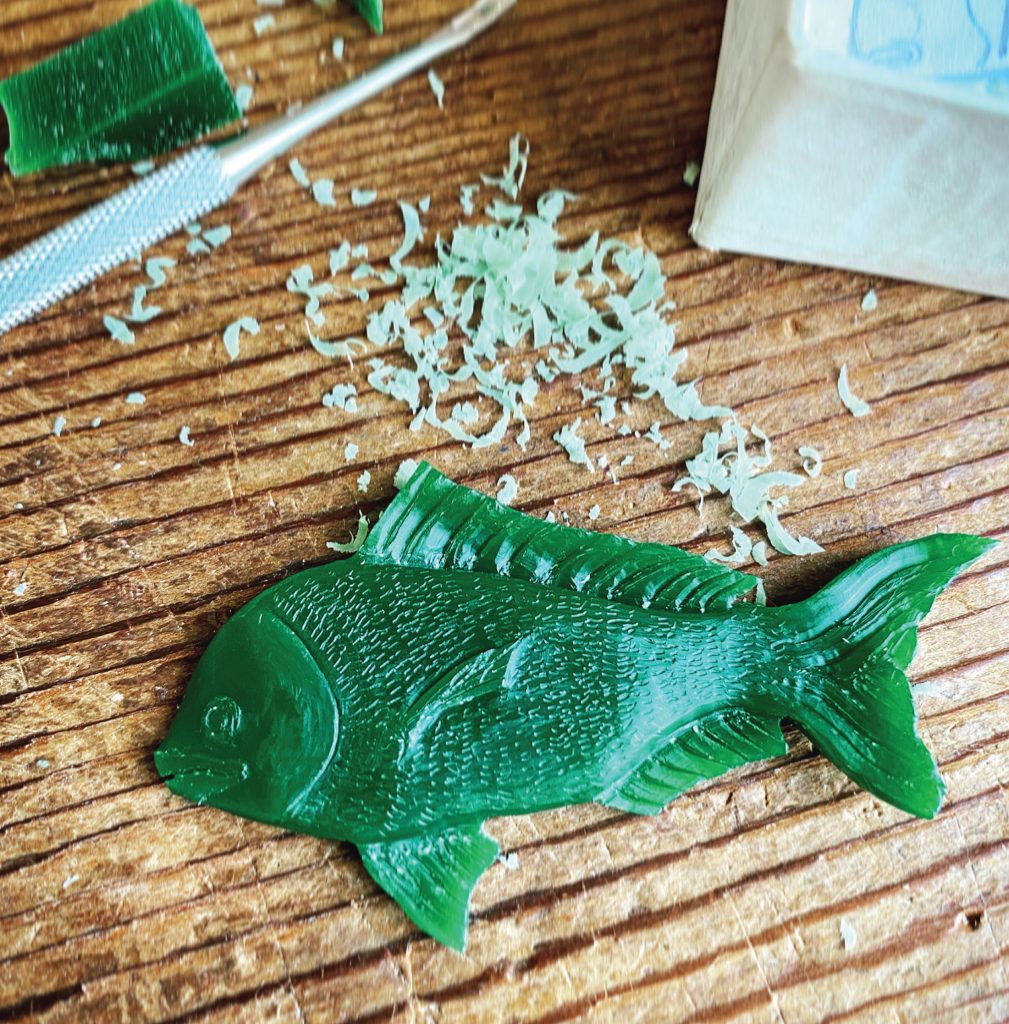
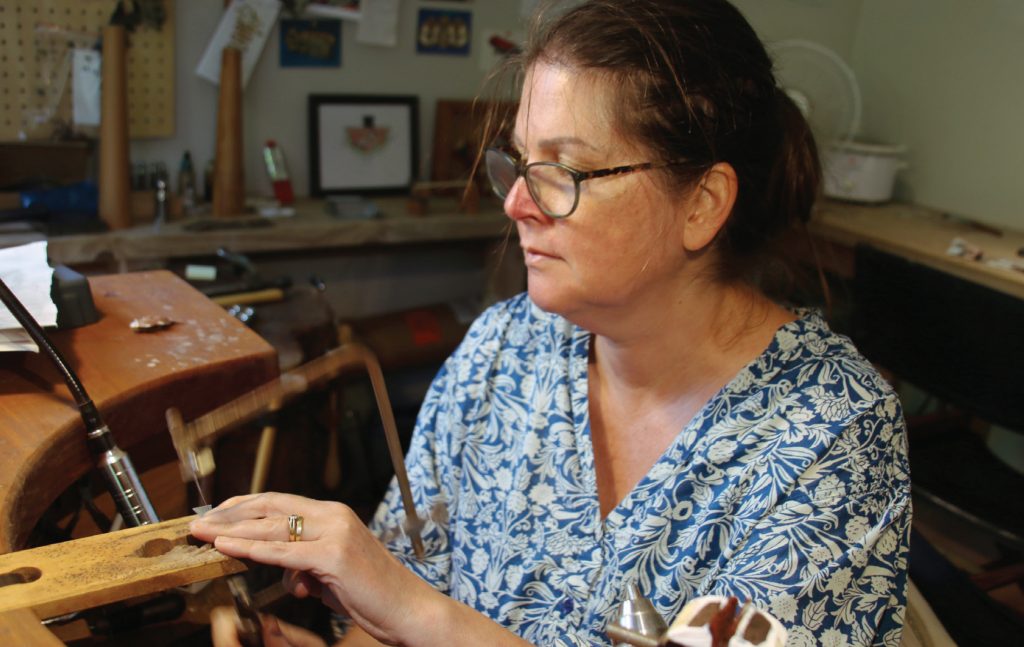
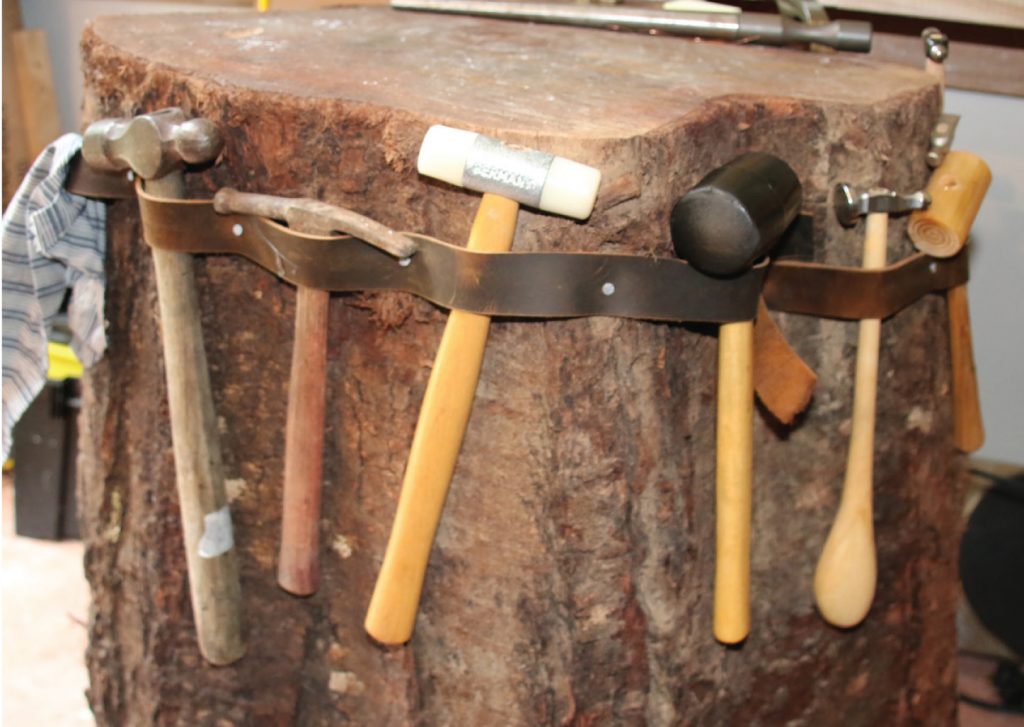
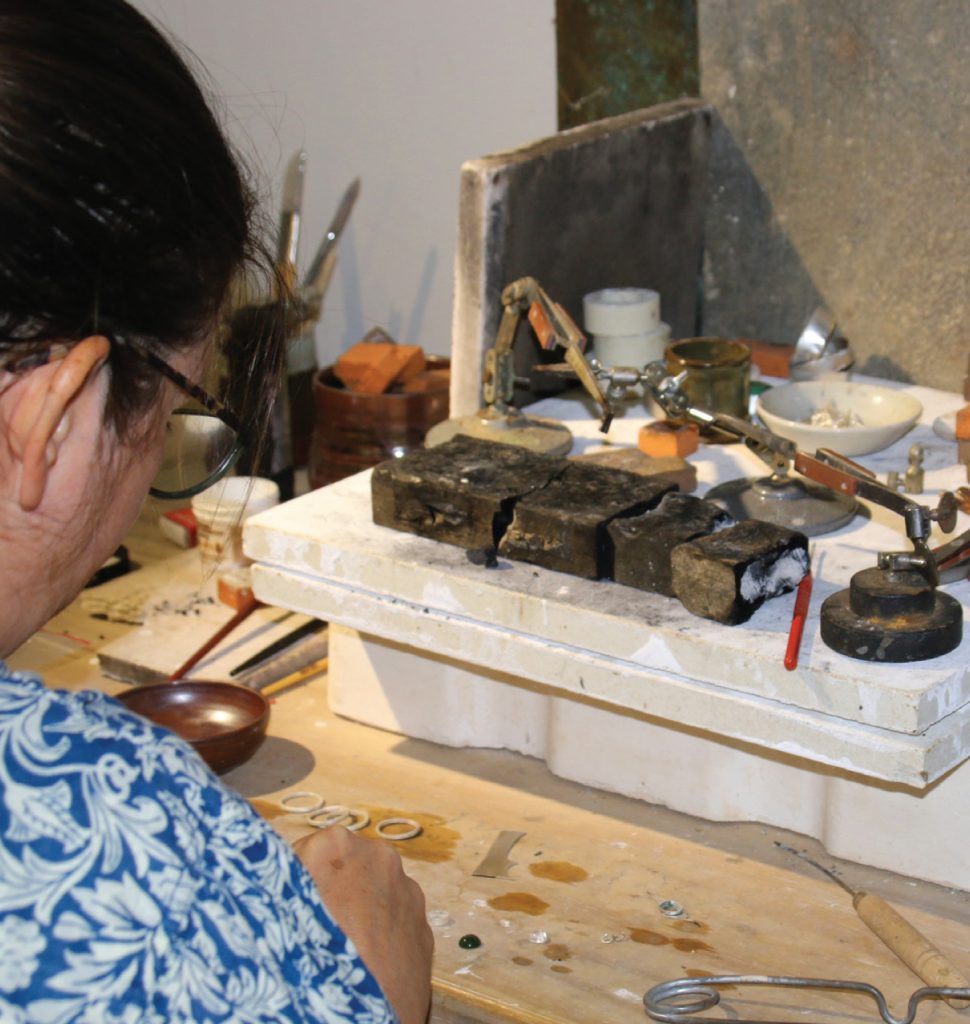
Waiheke silversmith Jenny Mason talks to Helen Vause about her ancient craft .
This article was first published in The Waiheke Weekender on 19 January 2023
It was the touch of bling in the wealthier drawing rooms of the world. The silver serve ware brought a look of luxe to the posher sideboards and it was the sparkle that everyone who had the wherewithal to buy it, wanted. Silver tea pots, coffee pots, and much more kept the silversmiths of the day very busy turning out their desirable wares. Alongside its more expensive sister gold, silver was also a precious metal that had appeal for adornment. By the mid1800s, Americans couldn’t get enough of the distinctive jewellery the Navajo people had started making, often worked with turquoise and introducing a whole new style to the fashion and lust for the gleaming metal.
Silversmithing is an ancient craft and those who practice it are now few and far between. But Waiheke’s Jenny Mason was captivated by it in her teens and has immersed herself in learning about working with this precious metal, producing beautiful pieces of jewellery for local galleries on the island and clients far beyond.
On any day she’s likely to be down in her little studio, tucked under a house up one of the island’s quiet little bushy roads far from any disturbance. It’s her happy place but finding her way there through the years of parenting and commuting to city jobs, has taken a while.
She’s been steadily gaining a reputation for her work since she found the space and the time to seriously hone her silversmithing skills in 2019. Established in her now regular practice of working with metal, she disappears into another world of intense concentration, a sense of creative purpose and sometimes burns her fingers!
It’s her passion. She is enchanted by the alchemy of working with silver and the processes of it all, where medieval chemical science mixes with pure magic.
Her first close encounter with silversmithing was 30 years ago at university in upstate New York. British born Jenny’s American parents had taken her back to the United States for a taste of life in their home country in her teens, and she’d enrolled at the private liberal arts, Skidmore College in pretty Saratoga Springs. The university had a metals studio and offered many courses in working with precious metals for creative and artistic pursuits. Jenny took as many of these courses as she could, considering she was majoring in English. “At that time I was not ready to follow my love of making things with silver and try to make a career of it.” But the experiences in the metal studio at Skidmore were firmly embedded in what had already been a highly creative life.
It was no surprise to anyone that she’d have such a strong desire to follow a creative path She’d grown up in Britain in a family where there were always works in progress at the hands of people with a wide range of creative talents. Her father tinkered with electronics but also loved to make miniatures. Every Christmas and birthday, Jenny recalls there’d be a tiny new piece of furniture for his children to embellish their dollhouses.
Her mother was an academic in medieval literature and could make period costumes. One of her grandmothers was a whizz at needlepoint and the other had a fascination with applique, creating beautiful fabric pieces. Her younger sister also went to Skidmore and on recent travels Jenny was delighted to hear her lecturing on jewellery in Paris.
At college in the beautiful American resort town, Jenny had been able to explore her strong creative drive, but she had not been won over by the way of life in that country. She’d also met her future husband, fellow student Paul Mason, who also happened to be an Englishman. The pair returned to the United Kingdom together, and Jenny left the world of the metal studio behind. She found work at first in newspapers, putting together the pages that covered the regions. It was highly engaging, covering the booming television industry and all its drama both on and off screen. The television world looked pretty exciting from a newspaper office, and she enrolled at the prestigious Goldsmiths, part of the University of London, to do a Master’s Degree in television production.
She laughs at the memory of diving into that world and finding herself in the wrong role in a very busy picture. “l found working in that industry very overwhelming. It’s a job that just consumes all of you and your life. It just wasn’t the life for me. “
Restless and looking for a change of direction, Jenny and Paul, like plenty before them, were attracted by talk of faraway New Zealand and wondered if it might be the place for them and their cats. One trip convinced them to return to the UK, pack up their lives and move here. They found work in South Island ski fields, and Jenny earned her living flipping burgers. They set off exploring the country, looking for just the right spot to settle, tootling around in their modest vehicle and sleeping mostly under the stars in their tent. With them were their beloved cats Robyn and Wilkins “We wouldn’t have left them behind in the UK. They were like our children.”
Jenny and Paul carried with them tales of the wonders of Waiheke picked up from other travellers. When the day came to cross to the island it was pouring with rain. A quick glance at their map suggested Stonyridge Vineyard was an attraction within walking distance of the ferry terminal at Matiatia. Bad idea! Soaked, nursing blisters and disappointed, they limped back over many kilometres to the ferry. “I told Paul I couldn’t understand what anyone saw in the place.” But they gave the island another chance. It was when camping in Whakanewha Regional Park when they awoke to the realisation that they’d found their paradise. The park ranger wasn’t pleased to discover the startled, whiskered Misses Robyn and Wilkins, and sent the campers packing. Jenny and Paul settled on Waiheke in 1998, along with Robyn and Wilkins.
Paul taught on the island, and for some years Jenny commuted to work in the city. They raised children and life got in the of Jenny having the headspace, the time, or the place to get into making silver jewellery. But luck, the grapevine and the small scale of the community led her to the studio of Waiheke ‘s jeweller turned sculptor Paora Toi Te Rangiuaia. He gave her bench space and generously shared his wisdom and techniques.
Although it would be years before she’d get to making silver jewellery in her own studio, the time with Paora was valuable and encouraging. Although she’d developed steady business in graphic design work that she continues with today, in 2019 she was ready to devote more of herself to her other love and get back into silversmithing. She set up her little studio and built up her supplies of tools like hammers, tiny pliers, and magnifiers. She crafted work surfaces to hammer and shape on, and got down to business, as the rest of the country wobbled through the lockdown days.
And the world loved what she was hand crafting in silver, sometimes with a touch of gold or stones in her little studio. Jenny Mason was a finalist in the Waiheke Community Art Gallery Small Sculpture Awards. She now sells her work at the gallery and is part of the island’s Space Gallery collective. Her work is available in a city gallery, and she undertakes commissions for people who know and love her work. “The most unusual thing I’ve been asked to do is incorporate a pig tusk into a silver pendant,” she chuckles.
Her inspiration comes from within and from all around her, with nature reflected in many of her pieces. Sometimes it comes from just outside the studio window from the sights that are such a common feature of life in the bushier enclaves of the island. The ivy climbing up a water tank, she says is an image that begged to be recreated as jewellery. So, she formed ivy leaves by hand into wax for a detailed and delicate mould, that could be sent away tor casting in sterling silver.
She points out that many jewellers and artists respond to nature and its flora and landscapes in this way, using it as the basis of new work. She’s made work from the striking shapes of the Hauraki Gulf, notably Rangitoto Island. She crafted a landscape shaped pendant with relief work in silver depicting the island’s familiar form, framed with a narrow gold border.
Often, she wants to work with found objects that are easily sourced around the is land’s beaches; baby scallop shells and sea glass often make their way into her work. She says after a bit of fossicking for “just the right bits” She’s found the island coastline facing the city has the best selection. ‘”As well as being pretty, seagrass is a piece of history. A lot of it is glass from the bottling plants of years ago.” And while hopefully boaties are no longer flinging their drink bottles into the gulf, those that did this in earlier times guarantee a running supply of different coloured sea glass pieces for keen eyed artists like Jenny.
Silversmithing by hand is slow, painstaking work and often it will take a couple of days to make one piece, slowly coaxing silver sheets and foil to do what she wants. Sometimes, as she says, it involves ‘bashing away’ with one of her many little specialised hammers. Sometimes it can involve using tiny long legged pincers and magnifiers to execute detail where fingers would be too clumsy and human eyesight would just not be adequate for the task. It involves using sharp and potentially dangerous tools and it can call for using a heat source at alarmingly high temperatures to soften silver, making it more malleable for crafting. And yes, she laughs, even with the greatest of care there can be plenty of mishaps and days going home with ‘munted fingers.’
Then there are the days when whatever is in the mind’s eye just isn’t working for the artist and the project has to be reworked or abandoned after hours of trying. “Sometimes when you’re working on a piece, it just doesn’t work out as you have planned. You just must recognise the right time to give up on something, and not keep on at it wasting time and materials. It’s a judgement thing.” And silversmithing requires absolute attention and focus, perfecting the finish and detail that makes her work so attractive to the growing number of people wanting to wear it.
“lt’s that quiet focus, almost a meditative state where I can become totally absorbed for hours and hours in the work. That and the whole creative process is what I love and find so rewarding about being able to do this at this time in my life. I just love to be here, working in this studio.” She adds that it’s also a direct contrast to the state-of-the-art computer technology involved in graphic design work, that was for so long her bread and butter day job.
She’s known among the silversmithing community for her skill and for her problem solving approach. Recently she was able to employ other skills to put together a ‘how to’ video condensing a long, tricky process into something for other jewellery makers to follow.
Sometimes she shares the downstairs space with husband Paul, an author of books for children. But mostly she works alone, in her own world of precious metals and creativity. Lately she has become very interested in and absorbed by a process known as Keum boo. This is an ancient Korean technique used to apply thin sheets of gold to silver or bonding gold foil onto silver The gold foil is ‘horribly expensive’ and the process, not surprisingly, is tricky and painstaking, calling for a high level of concentration and an environment free of airborne particles that might float onto the work and spoil it. There’s the potential for plenty to go wrong when she’s quietly at work on her latest Keum boo silver and gold pieces — so how does she control the environment and set herself up for success? “Oh I shut the studio door and I’ve got a sign that says ‘Don’t come in. Working with gold foil.“
Come behind the scenes into the world of sculptor Kiya Nancarrow.
Kiya is based on Waiheke Island, New Zealand.
kiyanancarrow.com
Created by Rowena Baines Film & Photography, also based on Waiheke Island, New Zealand
View my new website here rowenabaines.co.nz
[ s p a c e ] artists Olivier Duhamel, Mary Ferguson and Kiya Nancarrow are exhibiting a selection of their work at the 19th Kings College Art Sale this week end, along with some other Waiheke Island Artists such as Sally Smith, Agata Leszczynska and Tracey Sullivan.

“Fine Lines 2022”
An exhibition of original nudes by the Catherine Mitchell Life Drawing group.
[ s p a c e ] art gallery
114, Ocean view road
Oneroa, Waiheke Island
Friday 21 October to Sunday 6 November 2022
After last year interruption, the Catherine Mitchell Life Daring Group is delighted to be hosting again their traditional yearly exhibition. The show opens on Friday 21 of October in the “small space” room at [ s p a c e ] gallery in Oneroa. The opening function will be on Saturday 22 at 6pm, all welcomed.
Representing the human anatomy in pencil, charcoal, pastel, watercolours, and a variety of media, this show is an opportunity to discover some of Waiheke numerous talents, to learn about a seldom presented aspect of New Zealand contemporary art and to purchase affordable original artworks.
The works on display will be framed, a departure from previous tenures when the group offered quick sketches on loose sheets. While most artworks are produced during the group weekly practice sessions, some more elaborate studio works will also be on display.
Figure drawing is the practice of drawing the human figure, one of the most enduring themes in the visual arts, from the observation of a live model, generally nude, or “undraped”. It is considered one of the most difficult artistic disciplines. Models offer a succession of short poses, from a few minutes to half an hour. The resulting drawings have raw energy, dynamic properties and often appear effortless.
Exhibiting artists
Paul Dashwood, Olivier Duhamel, Mary Ferguson, Peter Howard, Nicky Kukulka, Lyndsay Meager, Marta Meyer, Chiara Nitopi, Svetlana Parmenter, Cindy Reyners, Rod Thomas, Yolanda Whitehead.
About the Catherine Mitchell Life Drawing Group.
The Catherine Mitchell Life Drawing Group is a very active drawing group which has been in continuous existence for over 40 years. Past members include some notable artist such as Jan Nigro.
The group meets twice a week, every Monday evening, and every Wednesday morning.
Members include a broad range of people from all generations, from professional full-time artists to hobbyists and devotees as well as young art students.
This is an untutored drawing group, but instructors are sometimes invited to demonstrate their technique. New members and new models welcomed.
For more information, please contact Olivier Duhamel on Olivideroduhamel@gmail.com
About the Catherine Mitchell Art Center
Catherine Mitchell Art Centre is a society for the promotion and development of artistic and cultural endeavour on Waiheke Island. Located on Putiki Road in Ostend, the centre was established in 1952 when local craftswoman Catherine Mitchell left her home as a bequest for Waiheke people to use as an arts centre. Clubs and groups include Pottery, Spinning and weaving, Toastmasters, Life drawing, Bridge, Writers, All things fabric. For more information, please email: CMACWaiheke@gmail.com
About [ s p a c e ] art gallery
Established in 2013 in the heart of Oneroa village [ s p a c e ] art gallery is a collective of 8 local Waiheke artists and is exhibiting in 4 distinct areas a permanent collection of abstract and figurative paintings, original sculptures, elegant ceramics, bronzes, jewellery and drawings, indoor and outdoor art from delicate small figurines to monumental works.
More information on www.spaceartgallery.co.nz or contact Olivier Duhamel on Olivideroduhamel@gmail.com
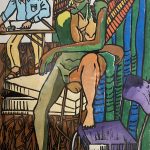
Svetlana Parmenter majored in Painting at Unitec in 2000. Her interest in line and lino printmaking originated from introducing students to black and white lino prints early in her teaching career. I see my linocut prints as a celebration of the artist models and fellow drawers at the Mitchel Centre. I have endeavoured to recreate the intimate atmosphere of our local Art Studio; its warmth, the glow of lamps, patterns and textures of the cushions and almost palpable concentration of friends, the drawers, as we speak of movies, travel, politics, drawing techniques new to us, while listening to jazz, blues, opera pouring forth from our faithful old CD player…. Svetlana.Parmenter@outlook.com
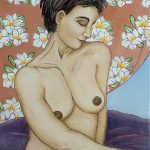
Cindy Reyners
Painting has always been my passion. Now I have the time and space to pursue this creative spirit. Many years ago, I earned 2 credits in BA art history which helped my self taught skills. I have sold paintings along the way, mainly to friends and acquaintances and family. I love to paint more now and improve. My ambition is an exhibition on Waiheke soon. Mosaics are my second passion. I copied exactly a few Byzantines big mosaic panels which taught me so much. Inspiration is everywhere on this beautiful island. cindyrey44@gmail.com
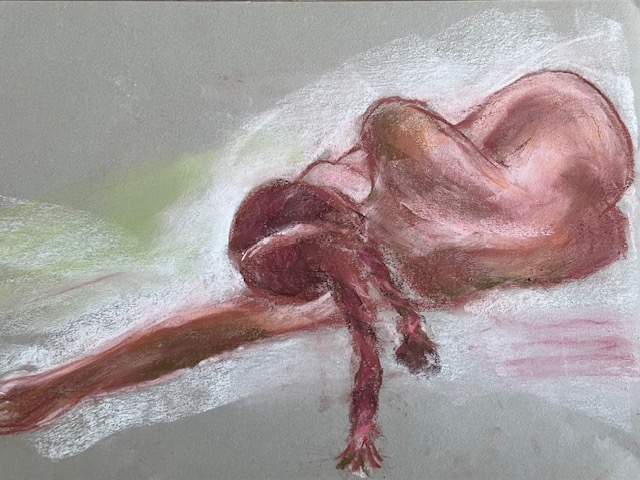
Rod Thomas has been painting and drawing for over 40 years. He has a love
of art and completed a BA in Art History in his early twenties.
Rod is primarily interested in portraits and landscapes carried out in
oil or pastel. He does life drawing when he can, as he believes the
challenge of getting down movement, weight, and likeness to be a
key ingredient to good drawing.
rpt@rptlaw.co.nz
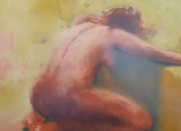
Yolanda Whitehead
Life drawing is the cornerstone of my art practice. I treasure Monday
evenings when I join the group of fellow artists and our wonderful
models, and we endeavour to improve our skills. Most of the time
the results are not quite right, but every now and again something
happens, and one ends up with a lovely drawing or painting. It is
very rewarding.
yolanda.w@outlook.co.nz
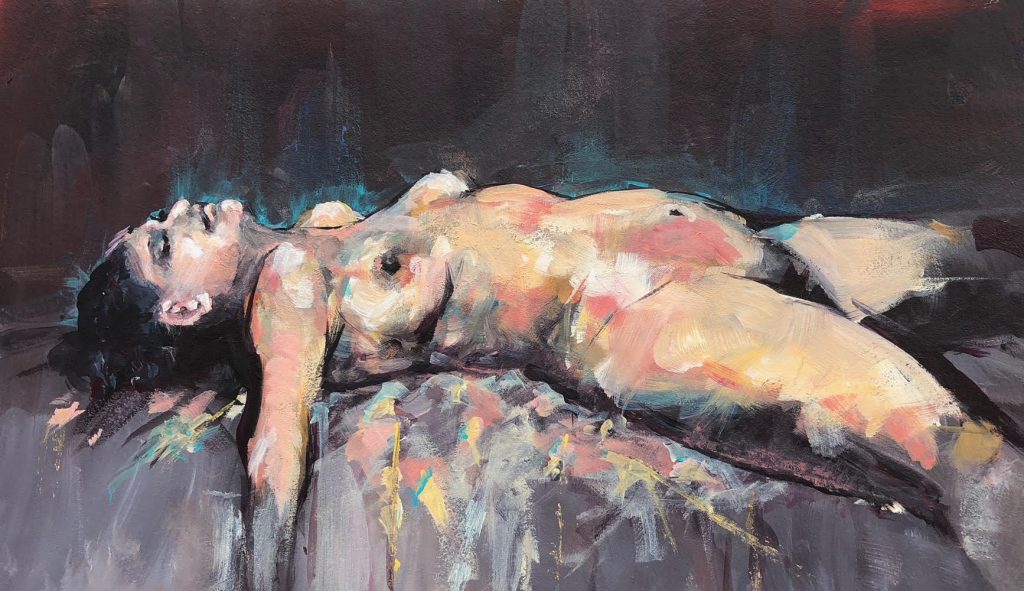
Paul Dashwood
At the age of 6 Paul attended art classes run by a local artist for
whom art was a serious affair, any sort of misbehaviour resulted in
timeout in the broom cupboard. In spite of more time spent in the
cupboard than the drawing studio, Paul’s lifelong passion for art
was born. In a career of over 50 years Paul has been a cartoonist,
illustrator, designer, art director, and creative director. Paul and Paola
arrived on Waiheke Island in 1995 and have raised 2 children here.
They have been working together as brand consultants and designers
for over 20 years.
paul@pandpdashwood.com
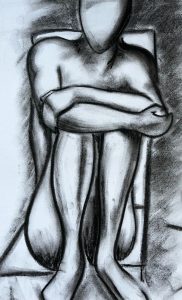
Nicky Kukulka
I have been working as a graphic/packaging designer for over 35
years in a commercial environment. First creating life drawing
artworks at art college in the UK 40 years ago. I have rekindled my
love of life drawing since moving to Waiheke Island this year, having
joined the art community at the Catherine Mitchell Art Centre. My
normal art practice is in more of a graphic style using screen printing
and creating illustrations on repurposed surfboards.
nicky_kukulka@optusnet.com.au
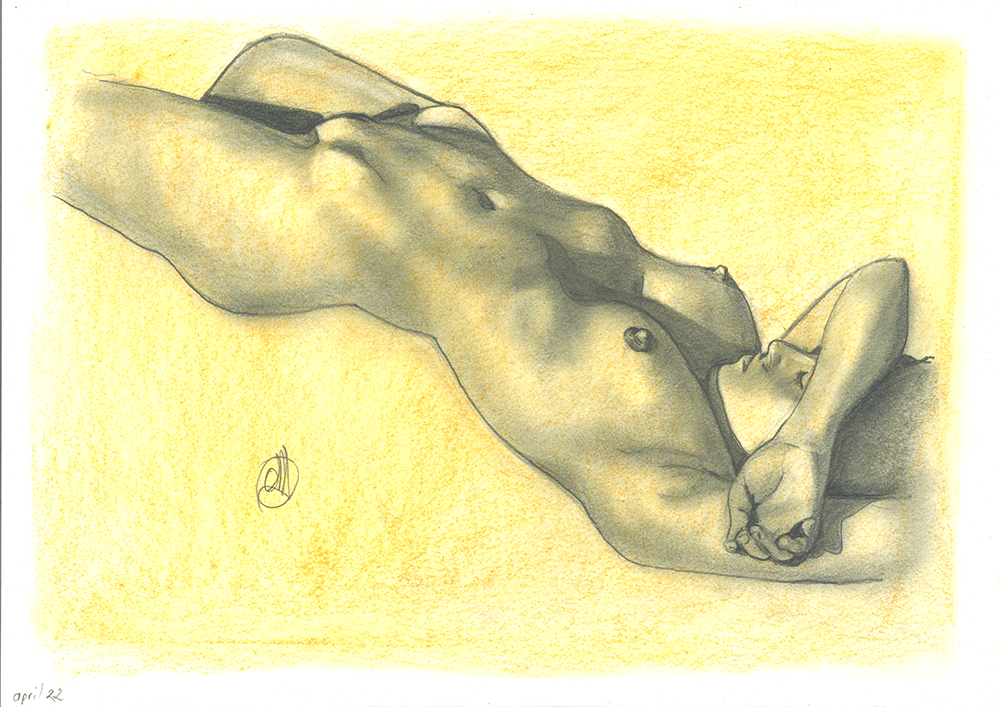
Olivier Duhamel
There must be some good reasons why life drawing has been the
foundation of art education, through ages and civilisations. We hone
our observational skills in the hope of acquiring the proficiency and
abilities without which no technology, contemporary or ancient, will
save us from mediocrity. When I show some of my best drawings
people may talk about talent and aptitude. But they never see
the several hundreds of bad drawings. There is no such thing as
talent, just hundreds of hours of regular practice. Thanks to all our
wonderful models.
www.olivierduhamelartist.com
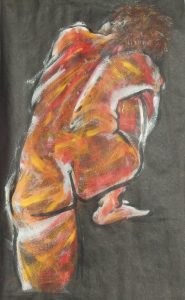
Lyndsay Meager
Well-known local artist Lyndsay Meager is a passionate member of
the Catherine Mitchell Life drawing group. Her strong and dynamic
drawings can be found in many private collections around the Island
and beyond.
lyndsayleem@xtra.co.nz
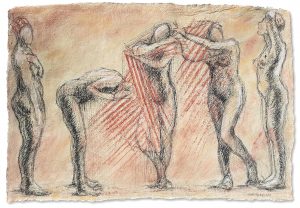
Mary Ferguson
With a love of drawing from the figure for many decades, there
is a fair accumulation of drawings in the studio. I have selected a
few, mostly recent, quick sketches and reinterpreted them for this
exhibition to form new lively compositions of five figures in one
work. Combining a passion for swimming, the coast, and water, I
have arranged these teams of five theatrical figures to suggest a sense
of waterfront activity and play.
marysmail@xtra.co.nz
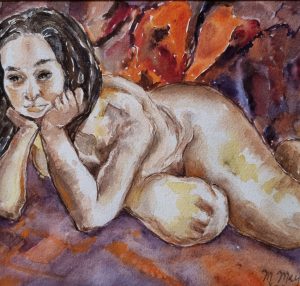
Martha Meyer
My art work has taken me from water colours to murals to
sculptures. I like to tell a story with my pieces. The human figure
is an integral part of it. I continue with my study and passion for
getting to higher levels and our life figure drawing sessions match
my needs very well. I will forever be a student of all aspects of art.
artmart472@gmail.com
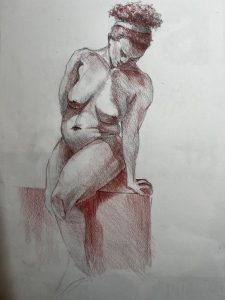
Peter Howard
Waiheke based painter Peter Howards excellent watercolours
feature evocative boats and seascapes around Waiheke and beyond.
Peter was mentored by senior well known Waiheke artist Raymond
Ramsay and is a long-time member of the Catherine Mitchell Life
Drawing Group.
peter.karin.howard57@gmail.com
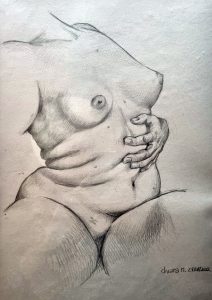
Chiara Nitopi
I’m Chiara, originally from Italy, I picked up a love for art from my
grandad who was a prolific self-taught painter. I pursued my artistic
inclinations up until university when I took a detour in mathematics.
I reignited my passion for drawing and artistic expression when
I moved to New Zealand three years ago. My first love is clay
sculpting but pencil drawing and watercolours are my main mediums
due to practicality. Live drawing is a challenge to better myself with
each drawing and celebrate the beauty of the human body.
Chiara.nitopi.kiwi@gmail.com
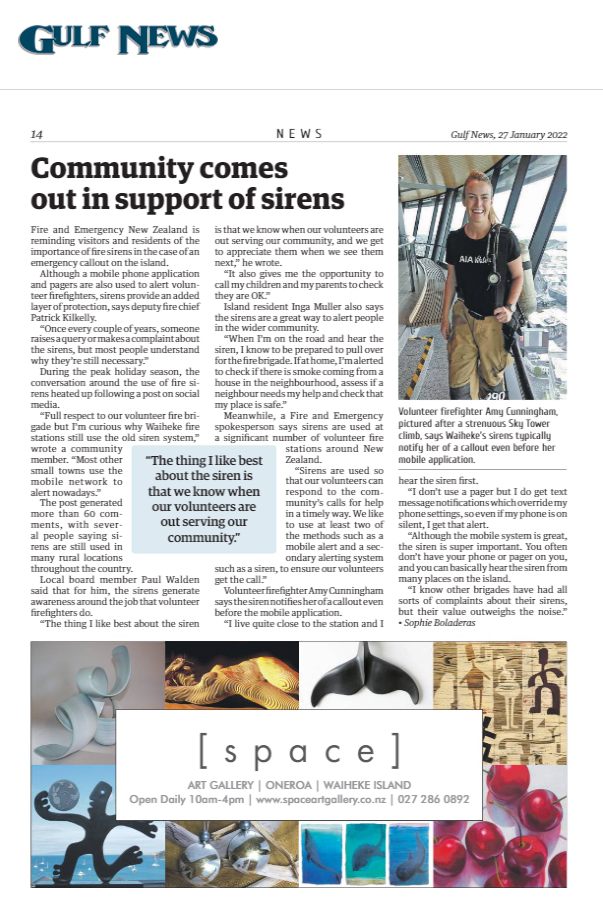
[ s p a c e ] art gallery is open in Oneroa for Island locals and visitors alike to browse and be amazed by our selection of indoor and outdoor artworks by notable Waiheke island artist.
Open daily from 10am till 4pm
As per the Red setting of the COVID-19 Protection Framework, visitors must wear a face mask, scan the QR code. Number of visitors is limited to 20. All our staff are fully vaccinated.
We are proud to be able to advertise in the local media Waiheke Gulf News and the Waiheke Weekender.
Our ad was designed by one of our artist, Jenny Mason.
Waiheke Gulf News 9 December 2021
If you know Katie Trinkle-Legge’s still life in oil you will see what a masterful painter she is and viewing her work in person is an absolute must as she has an incredible sense of colour and form. She also captures the colours and texture in her recent landscapes which undoubtedly should be seen in person at Space Gallery or in her studio.
Michelle Barber: What’s your background?
Katie Trinkle-Legge: I was born in 1965 in New York but traveled extensively as a child because my father was in the Military. I spent most of my childhood summers on Nantucket Island with my grandfather so it was no surprise that I ended up choosing to live on Nantucket full time after graduating from The University of the Arts in Philadelphia in 1988. It was one of the places that felt like a permanent home to me.
I was very fortunate to have landed there before it became totally discovered. The contemporary art scene was just starting to take hold and I was able to begin exhibiting my work with a great gallery.
I met my Kiwi husband Darren while he was traveling and working on Nantucket. We just celebrated our 30th wedding anniversary this November. Crazy how time flies.
We moved to Waiheke in 2010 because we love island life and wanted our son Jake to have a chance at Kiwi life. Prior to covid I would travel back to Nantucket every year for an exhibition of my work but now I just ship pieces out to my USA galleries.
MB: How long have you been making art?
KTL: I have been drawing and painting for as long as I can remember. My grandfather was an architect and my father was a painter. It’s in the blood. There was always paper, pencils and paints around so it just felt like part of everyday life to create images. Currently most of my works are oil paintings but I love using watercolor as a sketch medium for planning bigger work.
MB: What does your work aim to say if anything? It doesn’t have to “say” anything but moreover, what does it say to you?
KTL: I’m not sure I’m trying to say anything with my art. It’s more of an instinctual process for me. It’s a reaction to my surroundings. Light, color, shadows and the atmospheric hum that surrounds us, captivate my eye. I am restless if I don’t get into the studio for a few days but I do like to get away sometimes. Taking breaks from the studio allows me to come in with renewed energy and inspiration. Color and how we all perceive it differently is fascinating to me. I was trained as a classical painter but my palette is not traditional.
MB: Who are your biggest artistic influences?
KTL: There are quite a few but here would be the top four:
Georgia O’keeffe – for her scale and point of view when creating compositions.
California painter Wayne Thiebaud – for his textural paint application and choice of subject matter.
Edgar Degas – for his palette and ability to capture light.
Mark Rothko – for his color field paintings and their resonance.
MB: What else do you do? And does this influence your work?
KTL: I have been walking my dog so much during lockdown that I can’t help but be inspired by the landscape that surrounds us on Waiheke. I particularly love morning and evening light. People know me for my large scale still life paintings but I am creating landscapes too.
Darren loves to sail so we get away on the boat when the weather is good. I am a
fair-weather sailor. There are often skies and horizon colors out at sea that inspire my palette.
I also volunteer with Waiheke Native Bird Rescue. I love helping out with the penguins and all the birds. It is such a departure from my studio practice. I am able to completely focus on bird care while I’m there. It clears the mind of art career clutter.
MB: How did you cope with lockdown? Were you more productive? Does your work reflect what’s currently happening?
KTL: My mood during lockdown fluctuated. In the early days I was happy for the quiet break. Darren and I created a really fun upcycled table from old wooden pallets and I painted a Palm Beach scene on the top. (It’s available at my studio if anyone is keen to see it.)
I also had quite a few commissions but the best one was a wedding gift for a cousin in the States. The only bummer there was that the US postal service lost it for nearly a month so it was a very late wedding gift.
I am grateful that I have my studio and something to keep me sane during lockdowns. I feel for people who may have spent way too much time online during this crisis. I try to stay away from social media these days. It is a great tool for artists to get their work out there but I feel like seeing art in person is still the best way to experience it.
I’m part of the Space Gallery Collective in Oneroa. We just opened up again so I’m looking forward to seeing more people and connecting to the world a bit more. Anyone is also welcome to visit my studio in Surfdale.
Michelle Barber is the owner/operator of Artisphere.co.nz
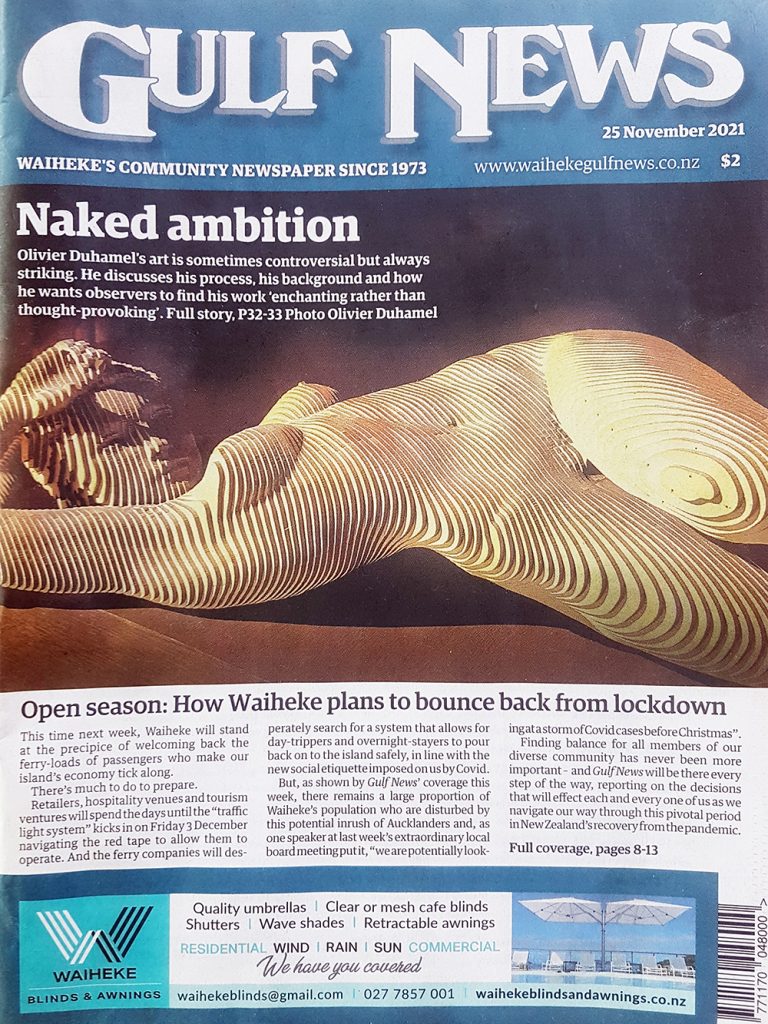
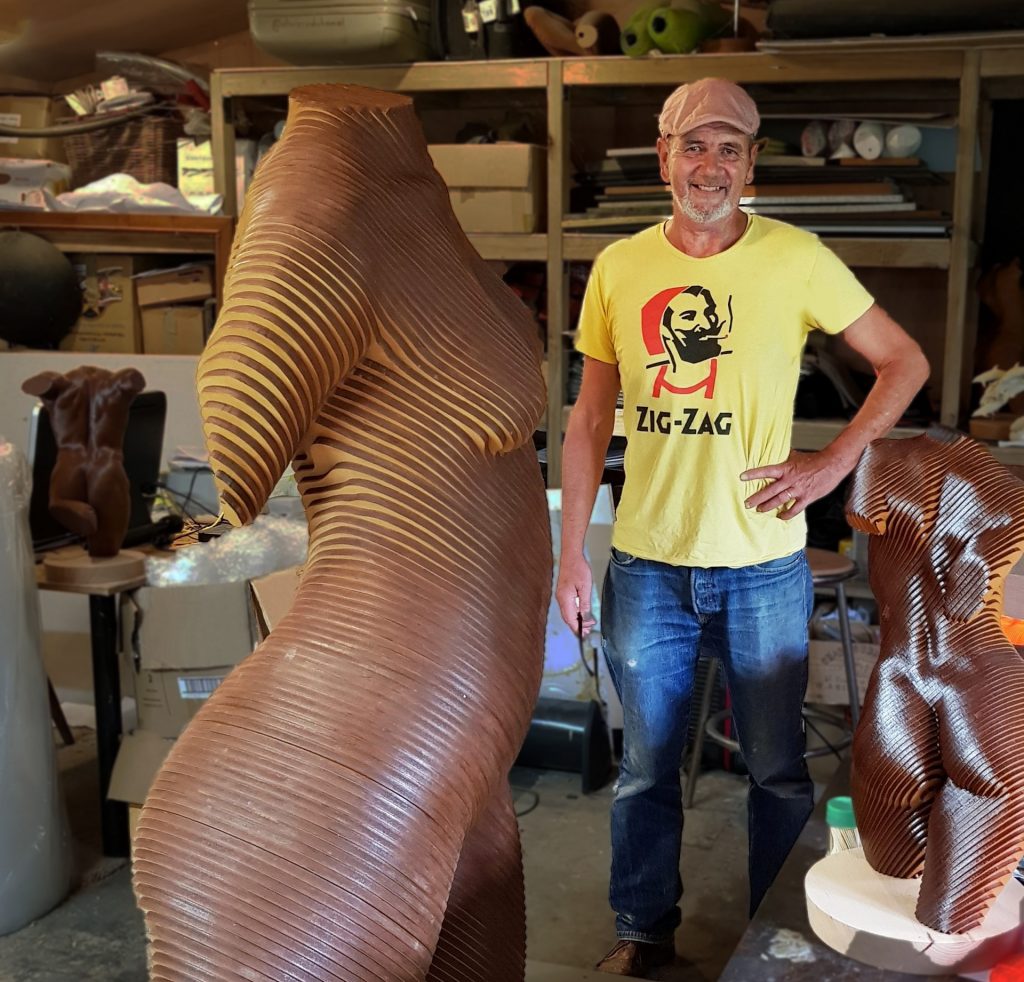
Waiheke Gulf News 25 November 2021
A study in beauty, emotion and mastery of the craft. Michelle Barber talks to Olivier Duhamel
Michelle Barber: What’s your background?
Olivier Duhamel: Thanks for thinking of me for your column Michelle. After years of travels, island hopping, young, beautiful, and free, Marie-France and I arrived here in 1987 by accident of luck, discovering Waiheke on the very first day. We quickly made many friends, asked for permission to stay a bit longer and have now been New Zealanders for longer than most New Zealanders. I am still an immigrant though, still feel very French and want to thank Aotearoa for making me feel welcome and letting me grow roots on this beautiful land. When our children were still children, I spend 15 years in an office working as an IT engineer. I loved it, found it to be ingenious, creative. For once in my life, I was good at something. As my responsibilities grew along with my salary and stress level, I realised that this was not really me, that I was pretending to be someone else. Following a redundancy, my wife encouraged me to pursue my artistic ambitions. Before all that, I spend some years smuggling second-hand cars into western and central Africa, a life of freedom and adventures for this young man. A yellow fever and cholera vaccination certificate was needed though.
MB: How long have you been making art?
OD: My first exhibition was in 2004 (a series of 6 drawings that are still available to the astute collector BTW). In 2006, a couple of friends and I decided to try melting bronze from my garage. Once I had managed an OK piece, I took it to a gallery in Auckland. It sold within a week and the gallery asked for more. I have been a full-time artist ever since and want to take this opportunity to thank Parnell gallery for their support. I am envious of my colleagues who have many more decades of practice behind them. It always shows.
MB: What does your work aim to say if anything?
OD: My work is not trying to convey any message, it explores no conceptual examination, and I do not feel the need to explain it. I am simply trying to capture the beauty and sensuality of my subject of study. (To my models, please be assured that you are not just a “subject of study”) When it comes to art, I am chiefly concerned with beauty, emotion and mastery of my craft. I am hoping that people find my work enchanting rather than thought provoking.
MB: Who are your biggest artistic influences?
OD: Easy one that one. I only have one influence. It is the strongest, most powerful kind of influence. You could call it an obsession, the one thing that makes the world go round. And I see no reason why it should not be expressed in art. I am talking about money of course. Still, I have been accused of exploiting women’s body for profit (I wish it were true) or of being your average dirty old perv, which is not entirely true either, as I am not that old after all. I prefer to justify myself by saying that I am celebrating the beauty of the female form. In any case, I never suffer from the blank canvas syndrome. I see myself as a digital artist. Digital art is often misunderstood, dismissed as too easy, in the same way that 19th century art officialdom disparaged photography, which has nonetheless since acquired its letters of nobility. Before becoming traditional, any technique has necessarily started out by being new and avant- garde. I like to say that if guys like DaVinci or Michelangelo had access to computers, they would have most certainly been using them, not that I have the audacity to compare myself to either of these two chaps.
MB: What else do you do?And does this influence your work?
OD: I am involved in the [ s p a c e ] collective in Oneroa. When a lease became available, a few friends and I decided to give it a shot. I am surprised that there are not more similar collectives around the country. It is very beneficial for artists to understand the business on either side of the canvas. Artists are typically working in the loneliness of their studio and rarely get to know their clients. Being in contact with the public gives us an invaluable insight on how our work is perceived. It is also very rewarding for clients to talk directly to the artist.
MB:How are you coping with lockdown?
OD: This has only been influencing my work in the sense that most of my retail outlets here in NZ and around the world have been closed for extended periods, and that all the shows, fairs, and salons I normally participate in have been cancelled worldwide. I used to take pride of my contribution to the NZ balance of trade, no more. I am extremely grateful of the various subsidies that the government has made available to help businesses in the same predicament. I am grateful for the continued support of my local Waiheke clients too. Other than that, I like to joke that 90% of my sculptures are now fully waxed. Finally, I could not give this interview without giving credit where credit is due and publicly acknowledge the contribution of the people who help me in the workshop and in particular my long-term assistant and studio manager, Vasco Humbert.
Michelle Barber is the owner/operator of Artisphere.co.nz
Silversmiths are rare these days but for Jenny Mason metal work has been an interest for many years and she is now able to focus on her craft and make interestingly beautiful jewellery with precious metals and found objects.
Michelle Barber: What is your background?
Jenny Mason: I was born and raised in London, although my parents are Americans. They persuaded me that I should experience life in the US, so I studied at Skidmore College in upstate New York, which is where I was first introduced to silversmithing, and met my husband, Paul. I completed a degree in English, while taking all the metalwork classes on offer. Paul and I were keen to travel, and in 1997 we took around the world trip and discovered New Zealand, where we instantly felt at home. As soon as we got back to London we applied for residency and moved out here a year later. Arriving in New Zealand we worked at Cardrona ski field, but when the season ended we had to decide where to settle. We drove around the country for six weeks, sleeping in a tent and trying to find the perfect spot (there were many) where we would be able to find work (this was harder). Then one morning, unzipping our tent beside the sea at Whakanewha, we realised that we had found it. I was lucky enough to meet Paora Toi te Rangiuaia, who had an extra bench space at his jewellery studio in Oneroa. Paora was incredibly patient and helpful to me as a complete novice, and always willing to take time out from what he was doing to explain a technique or give advice, but jewellery was still something I did in addition to working full time as a graphic designer. When Paul and I started a family it just became too difficult to fit everything in, and I put my metalwork on the back burner.
MB: How long have you been making art?
JM: I have always been a maker. One of my earliest memories is of playing with some florescent pink cardboard and a pair of scissors. I was still young enough that playing with scissors felt like a dangerous privilege, and by folding, cutting, and poking holes, I created a cube with a face on each side. I remember cutting a fringe of paper, and curling the fringe up – presto! Eyelashes! I was in a total state of flow, and utterly happy and proud of myself for creating something out of a piece of paper. My father also has a strong creative streak, he made me an incredible fully furnished doll house, and tiny working steam engines, model boats and perpetual motion clocks and tinkered with electronics. When I was older he used to let me loose in his workshop with a soldering iron and I would make birds and other creatures out of wire and leftover electronic components.
MB: What does your work aim to say if anything? It doesn’t have to “say” anything but moreover, what does it say to you?
JM: Silversmithing is sometimes almost a form of meditation. You are immersed in creation, and it takes time, which allows you to slow down, for thoughts to flow, and for you to think deeply about what you are making. Concentration is important, and it is a wonderful antidote to today’s always on, always connected, easily distracted thought processes. I’ve been using a lot of found objects, primarily beach glass, but also pebbles, vintage beads and silverware. I love taking something that has little relative value but a beautiful form and elevating it by incorporating it with precious metals and stones. Found objects conjure ideas about transformation and impermanence, connect us to the past and remind us of universal human themes. But often my work is just a response to something I’ve seen, a plant, a view, a bird. A way of exploring something I find beautiful, or recreating it in different materials, trying to capture it in a different medium.
MB: Who are your biggest artistic influences?
JM: Adornment is such a universal human impulse, so working in jewellery your influences can span millennia and reach around the globe. I’m fascinated and humbled by the intricate work you see in museums, created by artisans working with the most basic tools, sometimes even thousands of years ago. There are so many hidden stories behind a piece of jewellery; is it a love token, a status symbol, or a memento? Does it commemorate an occasion, or identify it’s wearer in some way? Does it represent portable material assets, describe the relationships of the owner, or speak of a specific time in human history, politics and technology. Or is it just beautiful because that’s valid in itself. MB: What else do you do? And does this influence your work? JM: I still work as a graphic designer as well as a jeweller. My design work is almost always on a computer, and the technology is amazing, but a very different process from my metal work. A lot of people use technology in the jewellery field today, with CAD, laser cutting, 3d modelling and printing. I’ve been tempted to investigate this, as it’s a natural extension of my graphic design work, but ultimately what I love about the work I do in the jewellery studio is that it takes me away from screens and automation. It’s hands-on, often grubby work, with flames, abrasives and chemical processes. There is no ctrl Z when you make a mistake, so you need to consider possible outcomes before you start, think through the best way to approach a problem, and be willing to work through the process in real time with tangible materials. Most of my jewellery work is either unique or very limited edition. I’m not interested in mass production, which technology makes much easier, and more invested in the process itself.
MB: How are you coping with lockdown? Are you more productive during lockdown? Does your work reflect what’s currently happening? (i.e., does lockdown/isolation influence your work?)
JM: I wasn’t able to go to my studio at level 4 as it’s not at my own home, so I spent a lot of time thinking up designs and ordering materials – I’ve got some stunning stones to work with now. It was wonderful to get back into creating when we went into level 3. I had a moment of pure joy that first day back in the studio when I realised how happy I was again, just tinkering, working things out, and playing with metal.
Michelle Barber is the owner/operator of Artisphere.co.nz.
While the gallery has been physically closed since 17 August 2021 due to Covid19 alert level restrictions, we are still able to sell via click and collect.
Feel free to browse our catalogue of artworks and to contact us for price, availability and any other information.
We can ship worldwide.
Waiheke Gulf News 9 September 2021
The week before Aotearoa’s Lockdown I visited Kiya Nancarrow in her Rocky Bay studio. I’ve enjoyed Kiya’s work for years and find the fluidity and motion of both the ceramic or steel that she uses to create her pieces intriguing. Even though her work has a delicate movement to it, the industrial machinery she uses creates an interesting dichotomy.
Michelle Barber: Where did you grow up?
Kiya Nancarrow: Wanganui. My mother had a farm north of Wanganui where we spent every single weekend although we lived in Wanganui township. Eventually mother wanted to move to the farm permanently as her heart was out there and she thought we’d all stay to help her but we all ran for the hills.
I trained as an occupational therapist and a teacher but every weekend I’d go to Welly in my Morris Minor to meet container ships to see if I could work for my passage, I was willing to go anywhere to get away. I finally met a captain of a German ship who said there are two conditions: 1. You have to pay $500.00 in case you’re lazy and 2. You can’t have sex with any of the sailors. We shook on it. I then had to wait for the ship to come around NZ before I could board. In the interim I told a friend about this and she talked her way onto the ship and took the last berth! It was the first time I experienced betrayal. My father felt sorry for me and helped me get to London in the end. Straight away I had work as an occupational therapist. I did that for a long while and also trained as a psychotherapist but at 29 decided I wanted to go to art school which was the whole reason I left New Zealand. Four years of art school and I was in absolute heaven working with ceramics. I went to London for 6 months and stayed for 20 years.
MB: Tell me about the movement in your work.
KN: I don’t know where it came from really. When I lived in London, I studied Buddhism which connects and flows through everything. Although I’ve never perfected it, I’m constantly trying to get the perfect representation of movement, always trying to capture the seamless action of movement. The best compliment I’ve ever had was when a woman came into a gallery and started moving her body and she was very rhythmic, this is how she looked and engaged with the piece.
MB: Do you study dance at all or look at it for your work? It feels like a natural connection to me.
KN: Dance is a reflection of energy or movement which is reflected in everything we do. In London I would watch ballet or modern dance but the movement of my work is coming from my gut, if my head is there it throws everything off but if i’m working from my gut and my instinct then the piece flows naturally.
MB:What do you prefer working with clay or steel?
KN: At Uni I had these ceramic pieces that I’d drop from a ladder trying to create the movement I was after. I now throw things on a wheel and then have a small window where I can bend it and create something with movement. These pieces can’t be high fired because they get damaged in the kiln and the electricity in Rocky Bay is so low that it’s hard to run the kiln. Clay really speaks the language to me better than steel but it’s delicate and can break when shipping.
When I started working with steel it was about making bigger and stronger work so that it could withstand shipping. The artist Jay Lloyd designed a steel press for me and a man named Brian made it on the island.
The work then needs to be galvanised which is done in town and is dipped in 400 degrees of melted zinc which is an incredible process to watch. The piece then comes back, I sand them down, they then go back to be powder coat painted; a process that electrically cooks the paint onto the steel.
Corten Steel though is my favourite metal to work with because it creates colour all by itself and doesn’t have to be painted. Corten has its own beautiful, copper colour.
MB: What are you working on now?
KN: Currently, I’m working on a steel piece going to King’s College. I have more bolting and welding to do.
MB: How’s your welding career going?
KN: Slowly, but good! It’s hard to see behind the welding mask and electricity and gas are a scary combination. If I can weld myself it makes working on the steel press a lot easier. My studio is like being a kid mucking around with these materials.
MB: How long does a piece take you to finish? All up, sourcing, going to town, etc.?
KN: It can take a couple of days if all the elements fall into place and the planets align but really it takes a few weeks with galvanising and powder coating, if I’m lucky.
MB: I called Kiya this week to see how her lockdown was going for her.
KN: I’m definitely more productive under lockdown, it hasn’t stopped me yet. And considering there is a limited supply of materials on hand makes you work with what you have in your coffers.
You can visit Kiya Nancarrow’s Rocky Bay studio after levels go down, call to book an appointment at 0211476994.
Michelle Barber is the owner/operator of Artisphere.co.nz
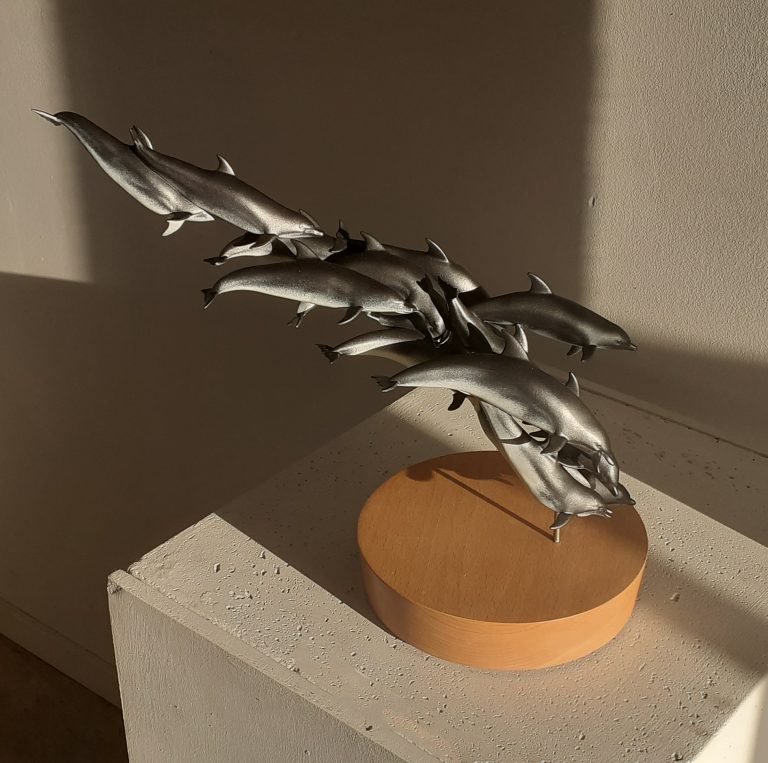
The gallery has been closed since 17 August 2021 and will only reopen once Auckland returns to level 2. This could be a few weeks away.
But in the meantime, the dolphins are roaming free and blissfully unaware and our artists are busy creating in their respective bubbles.
Please feel free to browse these pages, visit our artist websites and do not hesitate to inquire about anything.
Looking forward to welcoming you back “in the flesh” in the not too distant future.
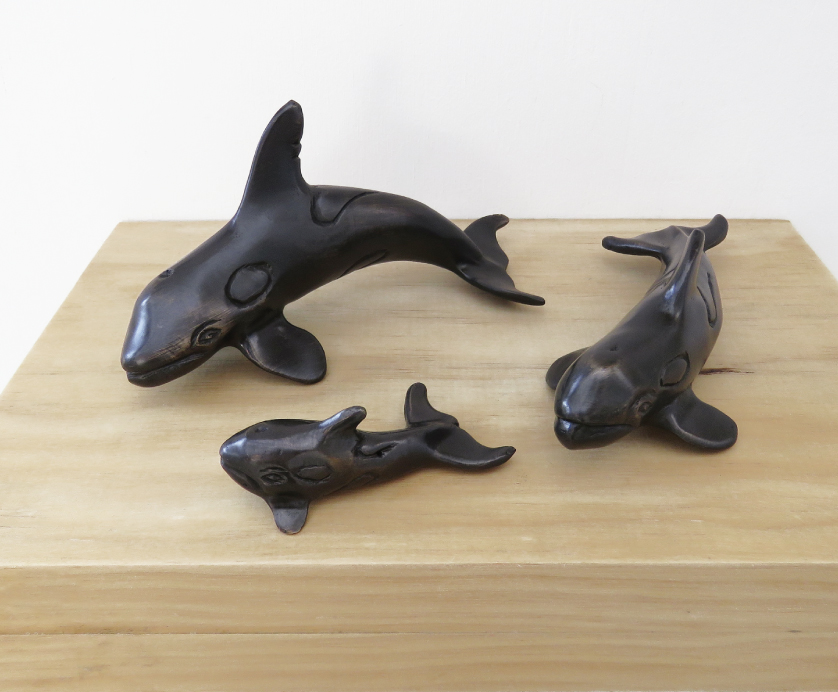
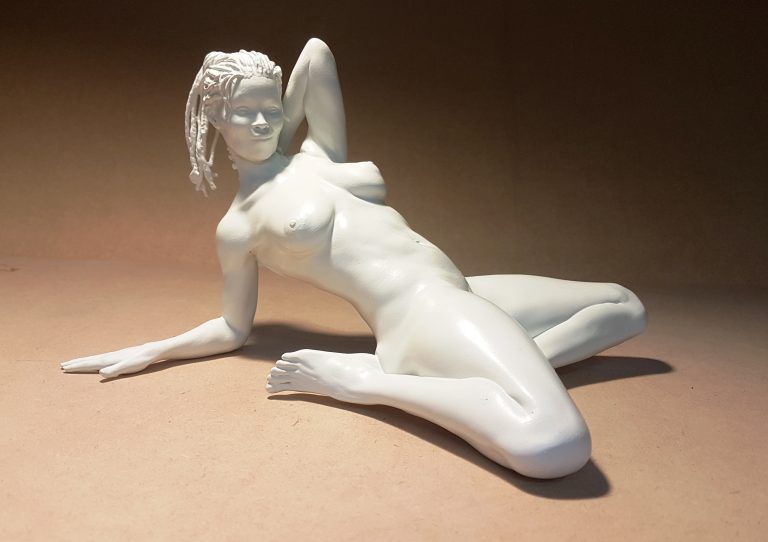
This small resin figurine by Olivier Duhamel, has been stolen from the gallery in early June 2021.
If you have seen this piece please contact Olivier Duhamel on olivieroduhamel@gmail.com
[ s p a c e ] artists Kiya Nancarrow and Olivier Duhamel are finalist in the Richard T. Nelson Awards for Sculpture to be held in Wellington 4-6 June, 2021
Kiya’s piece is called “Lines of Thought” in ceramic paper clay and is referencing an imagined flow and/or cross-over of thoughts.
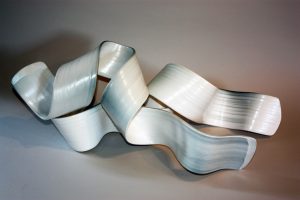
Olivier Duhamel entry is “Rodin’s thinker”, an appropriation of Jeff Koons famous “balloon dog”
The Richard T. Nelson Awards want to highlight the diversity of small-scale works and celebrate our unique culture and heritage through New Zealand sculpture.
These inaugural awards are valued at $20,000 with a premier prize of $15,000 rewarding creative talent and craftsmanship, with five highly commended prizes of $1000 each
A carefully curated selection of small sculpture works will be revealed to the public at the NZ Art Show, 4-6 June, 2021 in Wellington.
Up to 80 finalists have been selected and will be on display with all works for sale. The recipients of the awards will be announced on June 3 at the NZ Art Show 2021
[ s p a c e ] artists Kiya Nancarrow, Katie Trinkle-Legge and Olivier Duhamel will be exhibiting at the Art in the Park show in July 2021.Art In The Park Auckland | 23- 25 July | Eden Park
For more than a century, Eden Park has been home to New Zealand’s greatest athletes. Now it’s home to some of its greatest artists. This is the first opportunity of its kind to see curated contemporary art at New Zealand’s national stadium.
Meet New Zealand’s most exciting emerging and established talent and see their incredible work. Support the country’s vibrant creative scene and take home a piece of exceptionally unique art.
Discover the diverse range of established and emerging painters, sculptors, photographers, and printmakers exhibiting at Art in the Park. Explore the snapshots below, find your favorite artists and click to learn more. Visit them at the show, hear them speak, and fall in love with their art.
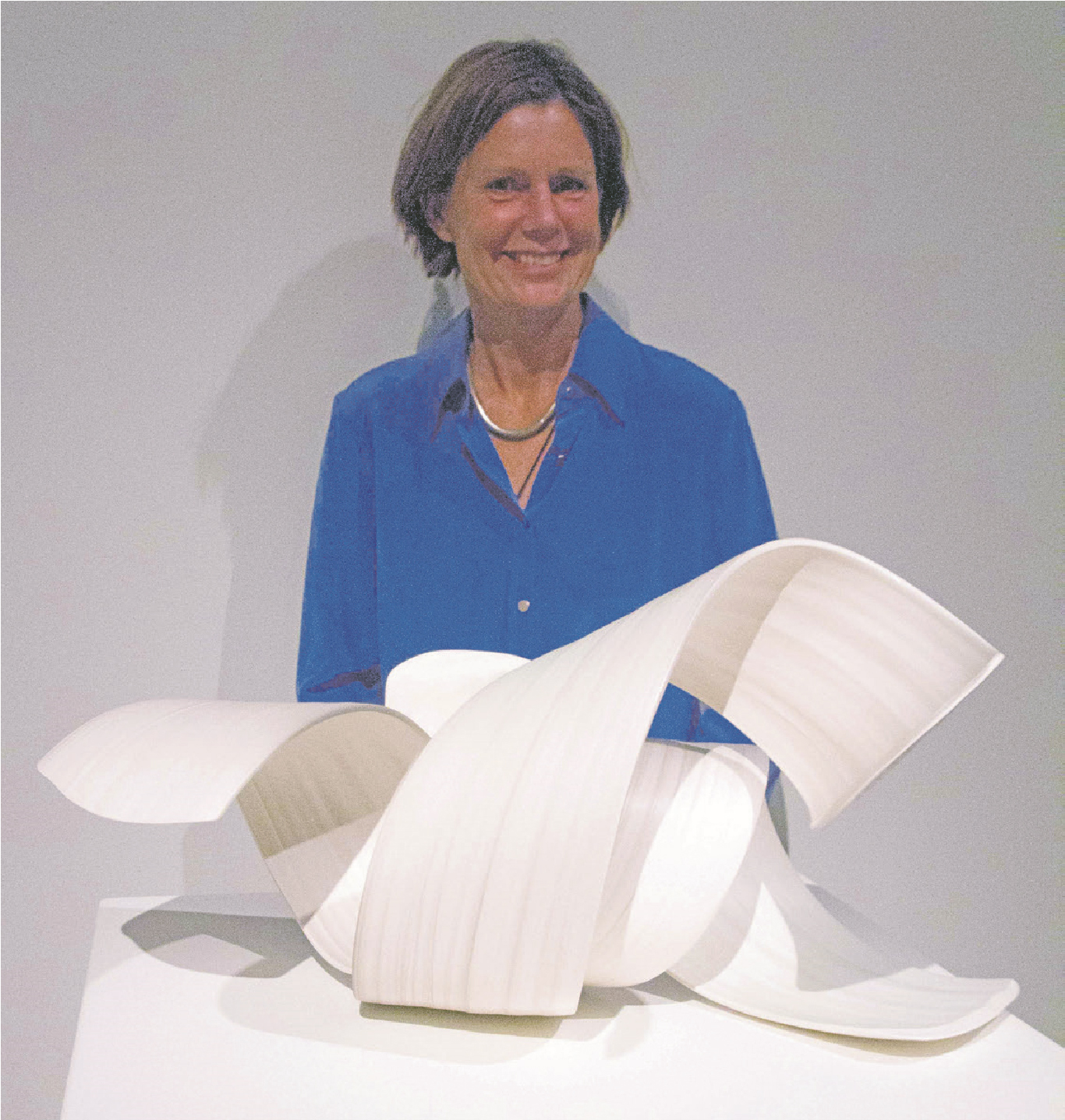
Kiya creates new rivers of steel
Sandra Chesterman – Gulf News, 25 March 2021
(Reproduced with permission of the author.)
Although a career in the arts was something she’d wanted from a young age, it would not be until 2004 that sculptor and ceramicist Kiya Nancarrow would set up her own art practice. Returning from London where she worked as an Occupational Therapist and Psychotherapist while also completing a BA in Ceramics at the University of Westminster, she was unable to find employment in mental health work here. It was a rejection which she now sees as a gift. “I’d never have risked it,” she says. “I never thought you could possibly live by making artwork.” Waiheke was a choice right from the start also. “I thought where do you go after London? You feel liberated in a big city like that but then you come to a place like this and you can be who you really are and do what you want.”
The swirling dynamic forms of her work are immediately recognisable. Each piece is unique but the underpinning intention of capturing “a sense of movement and continuous energy” has been the force behind her art for the past 20 years. “I got really interested in Buddhism when I was travelling in India and trained as a Buddhist psychotherapist. I was intrigued by their completely different outlook on the world and the whole theme of a continuum. They have a theory that everything is interconnected and that there’s an energy that we don’t see but it’s through us and through all objects. I got hooked, and I can’t seem to let it go – it doesn’t feel like it’s finished.”
She is constantly refining her work. Initially working in clay, recently she has extended her practice into corten steel. It was a move in part to manage transporting her work around the country – ceramic pieces often being damaged in transit; but also driven by her desire to work on a much larger scale. “A friend designed a purpose-built steel press and a local engineer built it out of scrap metal. It was great because they understood what I was trying to say so they built it to do what I wanted. It’s my baby and I love it but now I want to go bigger still. Now the limitation is me. I’ve got to a point where I want to be but now I haven’t got the muscle – it’s so frustrating. One of the engineers said, “you have to figure it out, Kiya.” So I had to get cunning with tools and things to help with the weight and the lifting.” Now she has a huge 300 ton-capacity jack with a pump, “totally unnecessary – I could lift my whole house if I wanted to, but it works really well.”
Her painted steel works are first galvanised. Great care is needed to avoid the zinc coating pooling on surfaces which need to be totally slick prior to powder coating. Others, like “Yield”, created for the recent SculptOneroa are left to weather.
“Corten steel will not be quiet,” she says. “whatever you do it comes through – it’s as though it’s alive. It does its whole oxidising thing for at least two months and then it seals. That characteristic was created by the shipping world which added copper to the normal steel-making process for shipping containers. Once it seals itself, that’s it – it doesn’t rust any more.”
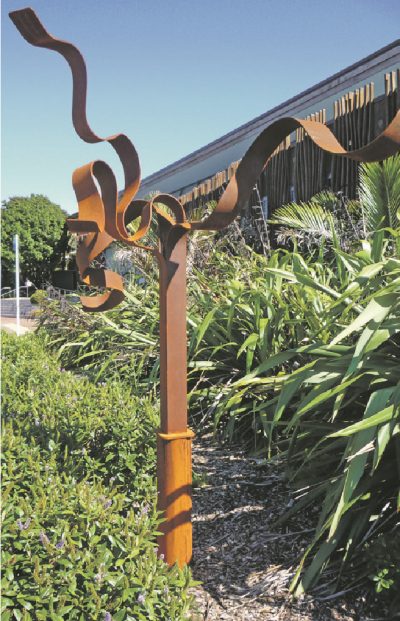
“That work was based on yielding – something I’m not very good at. Yielding to greater forces, which you see in nature. But seeing it as a strength rather than a weakness.”
Made from four separate pieces of steel, it was her first ‘proper’ welding job. “I went around to Island Engineering and said ‘can you help me weld this together?’ and they said ‘there’s the workbench over there’. They were great, giving me lessons on how to do it and persuading me to buy my own welder, which I did, but haven’t cranked it up yet.”
Her admiration for corten and its properties is obvious but she still loves working in clay, choosing to use a wheel rather than rolling it out. “I love what throwing does to clay – it wakes it up. It’s dead and inert when it’s just a lump of clay. I flip it and keep throwing, cut it and then it’s 50/50 as to what the clay is wanting to do and what I want to do. Every time I’ve said “No, you’re going this way,” it’s been a disaster. Clay is fascinating and it has a memory. If you’ve pushed it too far and it’s not happy, it will pretend it’s happy until it gets in the kiln. I reckon you’ve got just so many goes with it – more than two or maximum three and it will have a hissy fit.” She is constantly pushing to make her forms move more and to make them finer.
“Over the years I’ve wanted to make them thinner and thinner – I’d like them to be so fine you could see through them.”
Kiya is regularly selected as a finalist for awards such as the Portage Ceramics Award, where she has thrice won the People’s Choice Award, and the Small Sculpture Award which will open at the Waiheke Community Art Gallery: Te Whare Taonga o Waiheke next week. She is one of five local artists who are finalists, Olivier Duhamel, Hank Lloyd, Jenny Mason and Emma Rochester also being selected. A new work was made for the Award. “It’s one good reason for doing these competitions,” she says, “because it makes you sit up and really try. I really enjoyed making that work.”
Kiya exhibits at [ s p a c e ] Gallery in Oneroa. Olivier Duhamel and Jenny Mason’s work can also be seen there.
She also welcomes visitors to her Rocky Bay studio. Contact her on 021 147 6994, kiyanancarrow@gmail.com.
Details of artists’ studios are on the Waiheke Art Map which is available on line at https:// www.waihekeartgallery.org.nz/our-artists/art-map/ and printed in the Waiheke Weekender.
Sandra Chesterman is an independent art researcher and writer. She can be contacted with information for this column at artdiarywaiheke@gmail.com
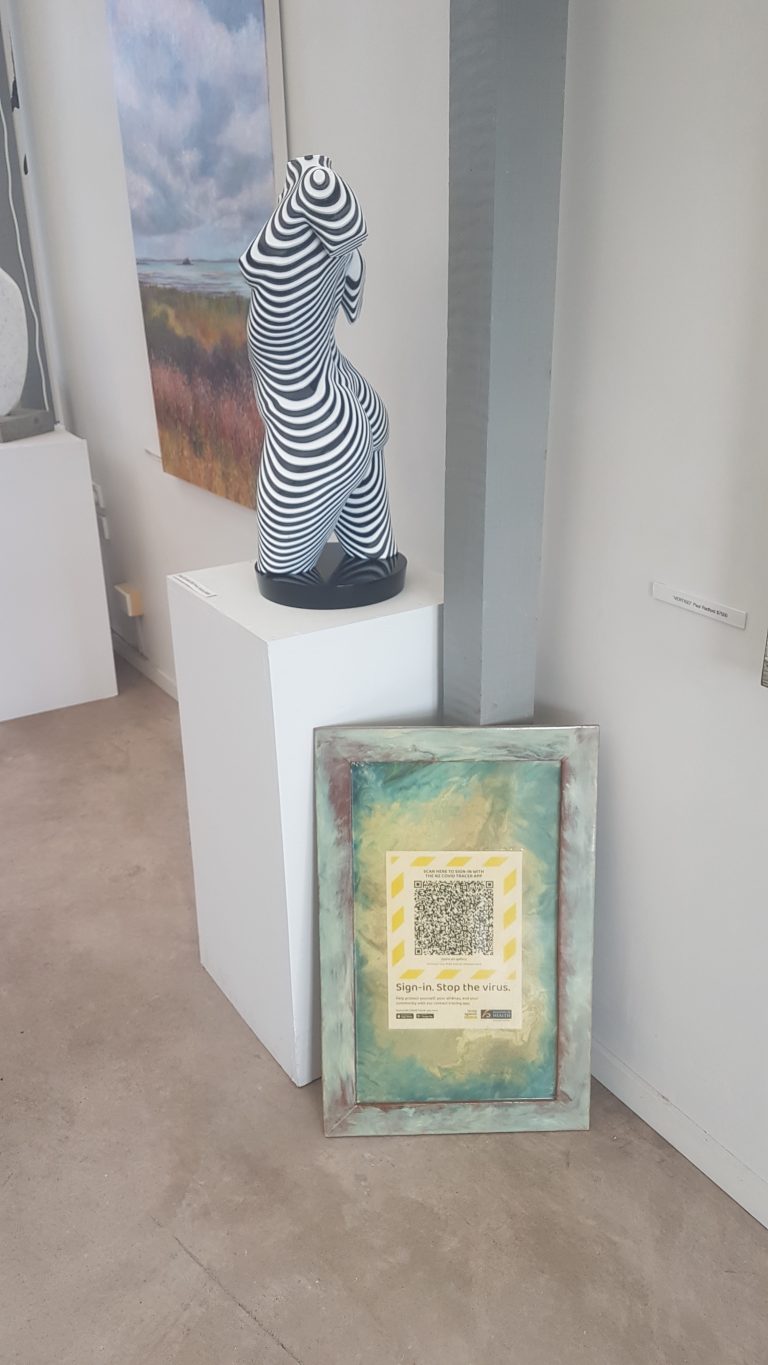
The gallery will be closed from Sunday 28 February 2021 in accordance with alert level 3 restrictions.
We will reopen when alert levels allow us.
In the meantime, all our artists are still able to ship pieces nationwide and overseas. Please browse our catalogue and feel free to contact us or individual artists.
When visiting space art gallery, please scan our Covid19 QR code.
The app can be downloaded from here.
Please remember to turn on your phone Bluetooth capability.

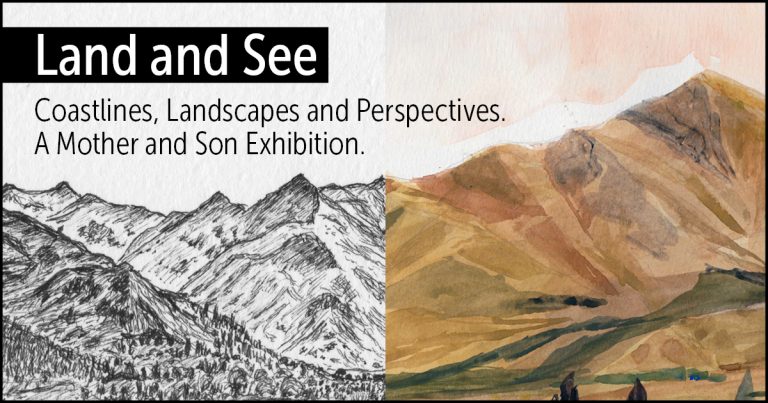
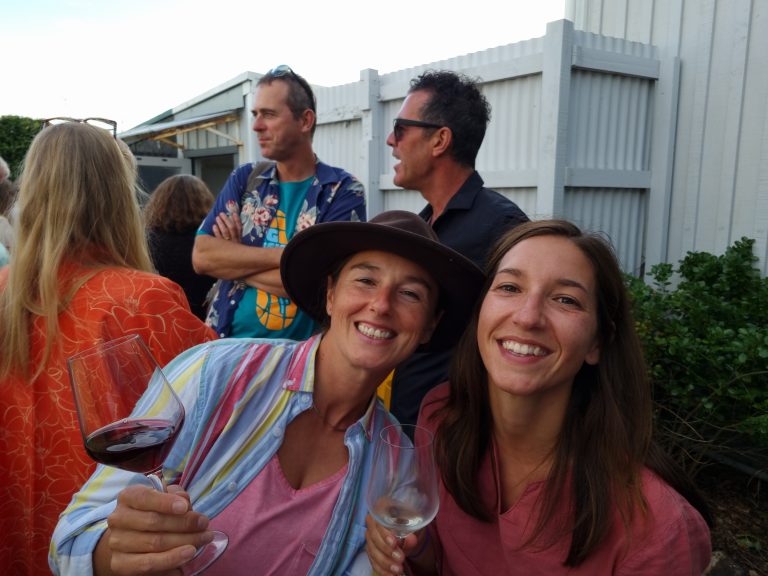
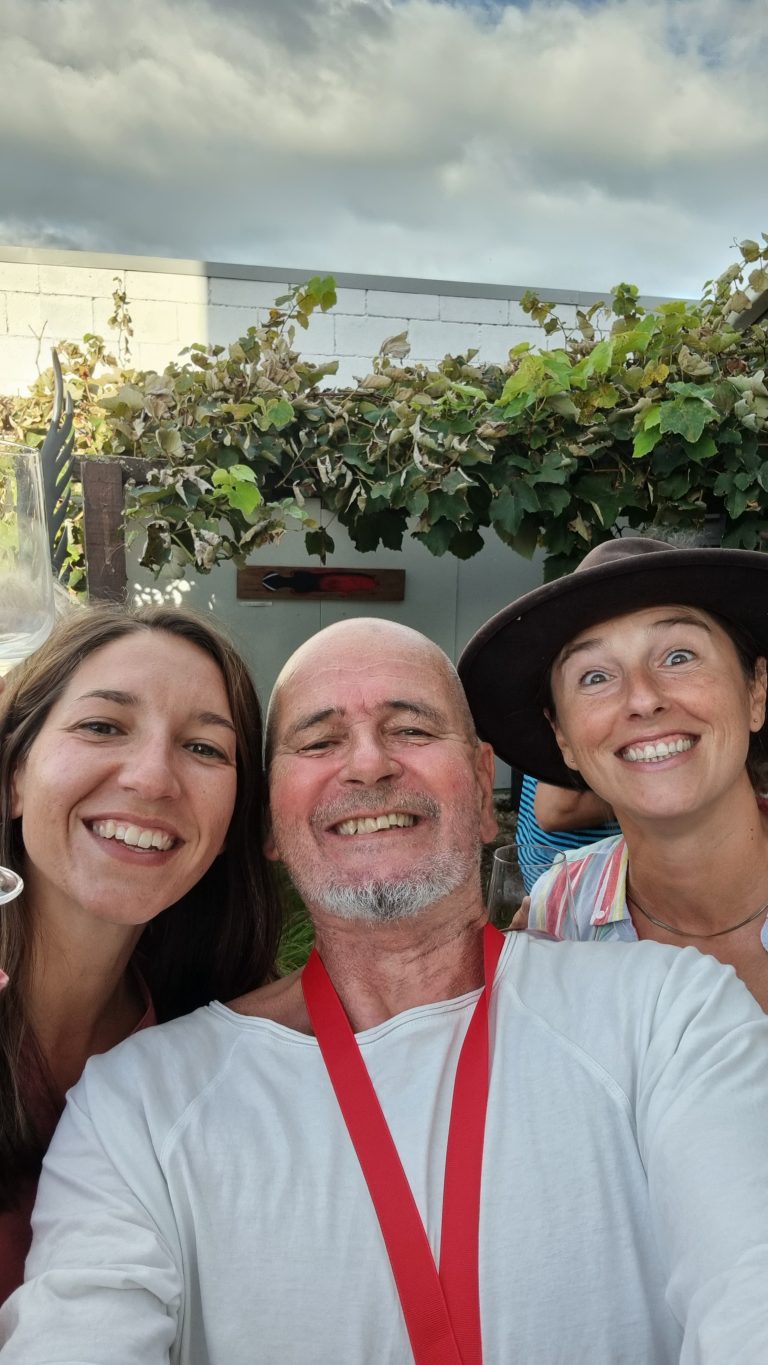
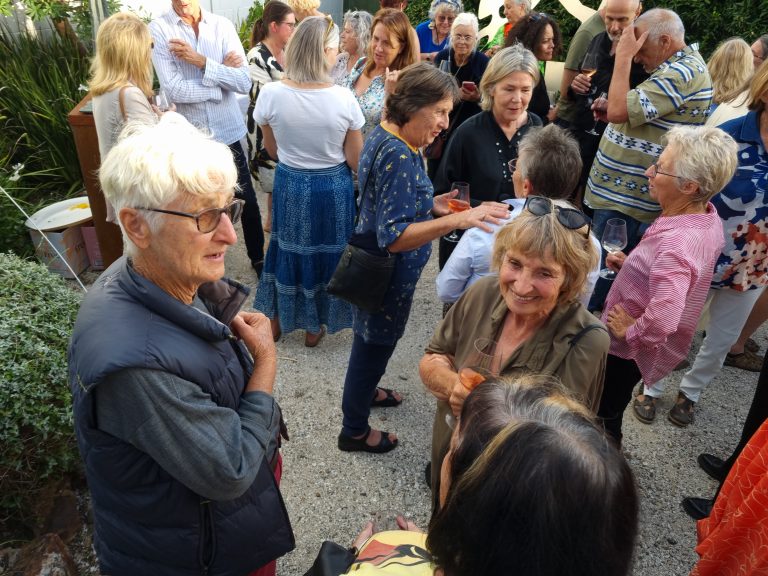
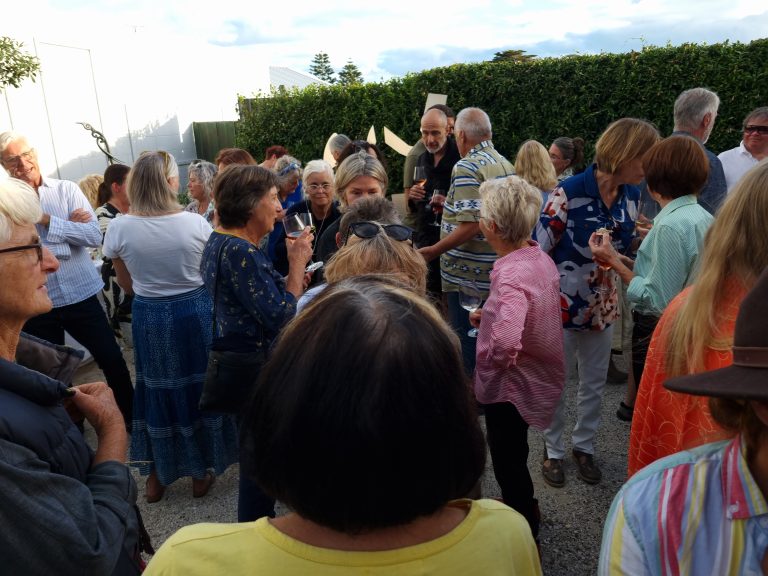
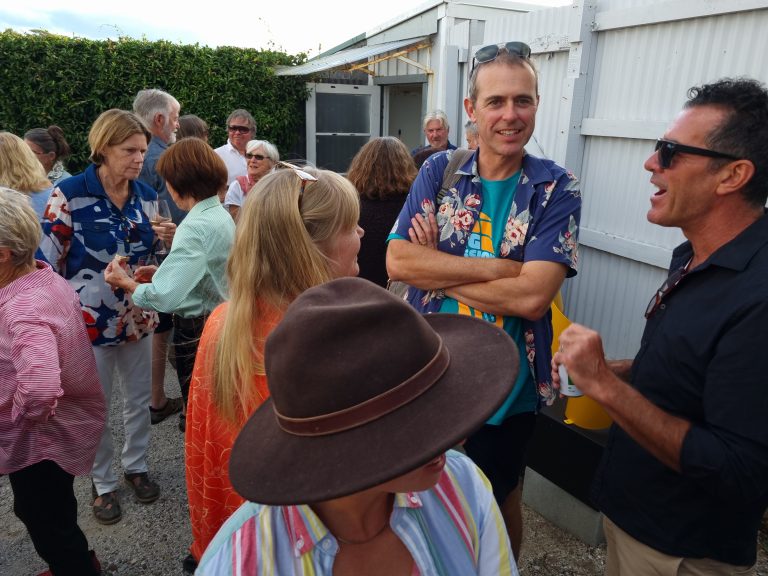
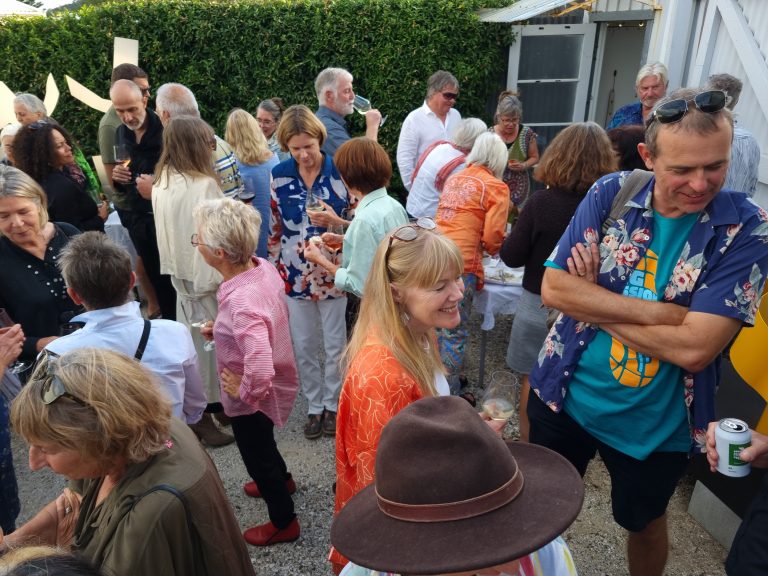
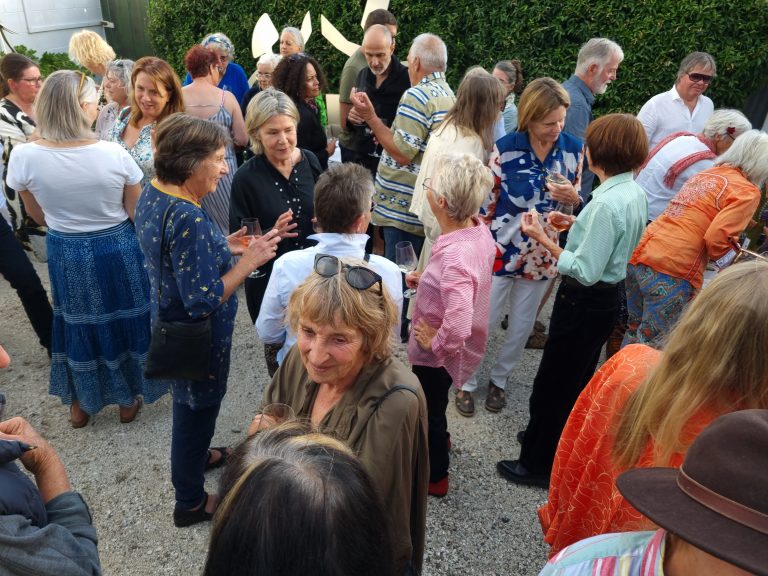
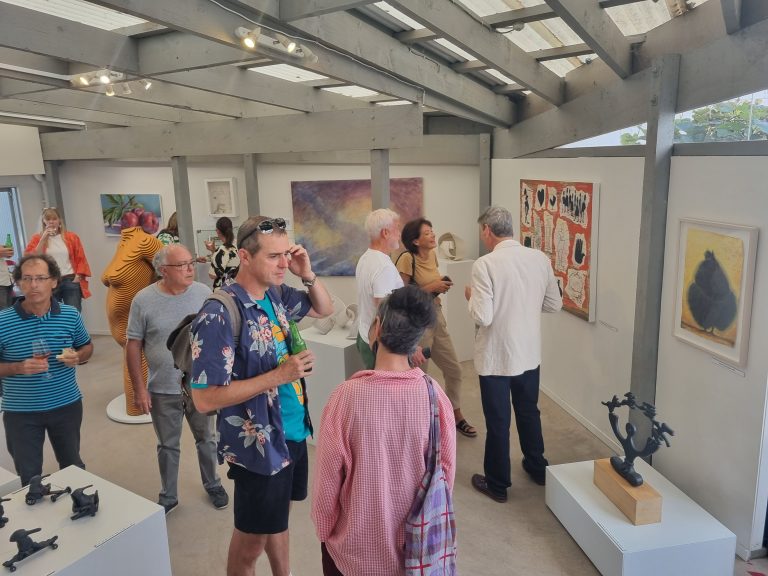
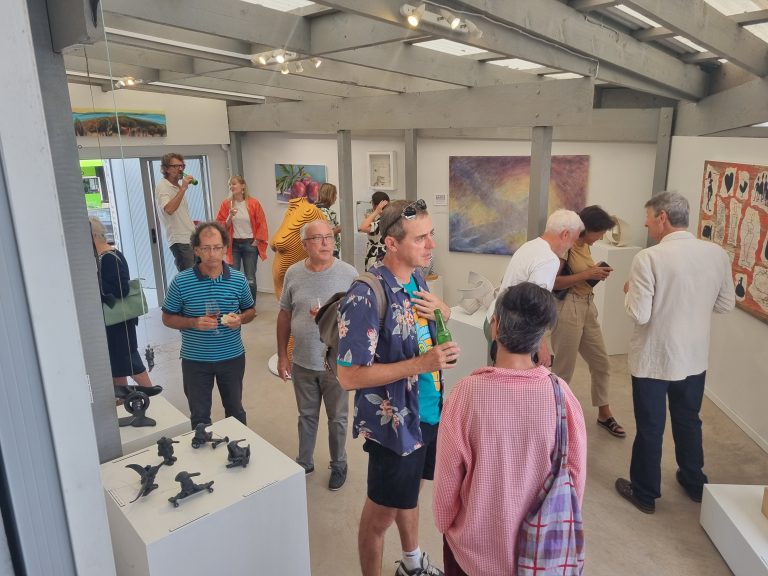
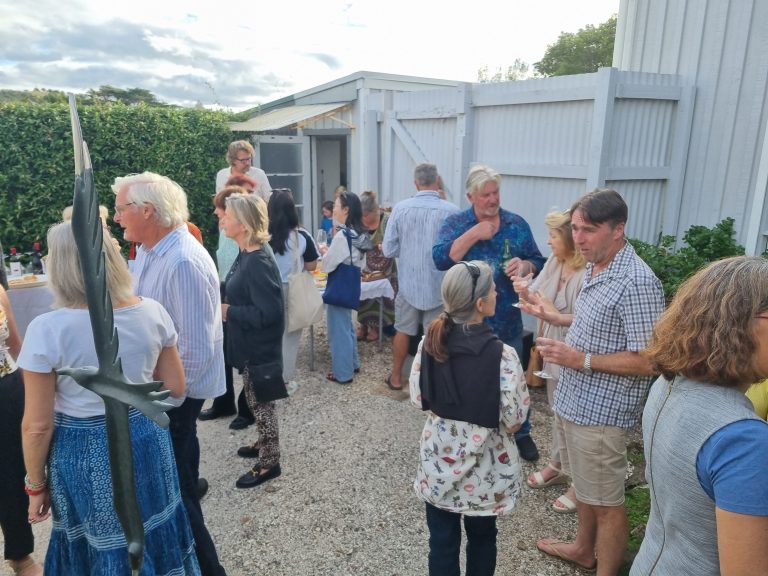
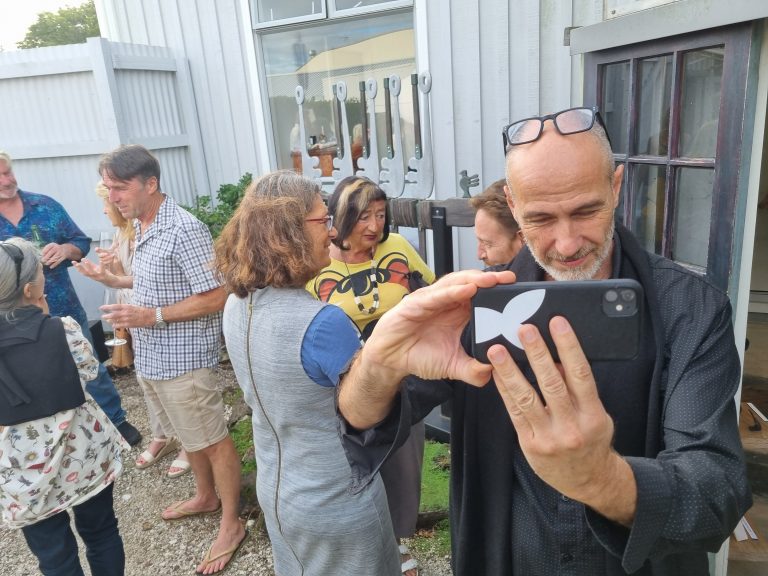

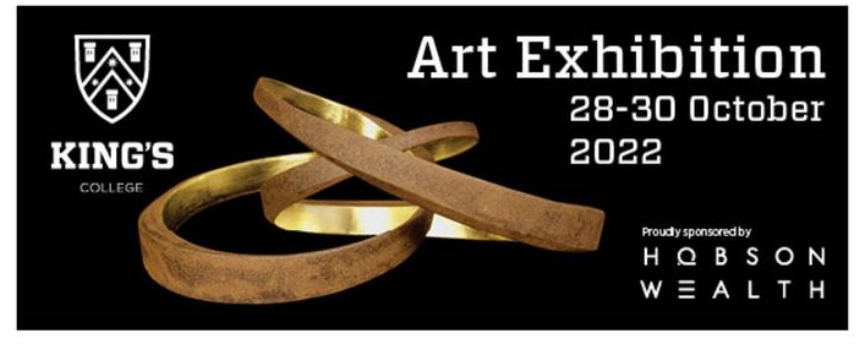
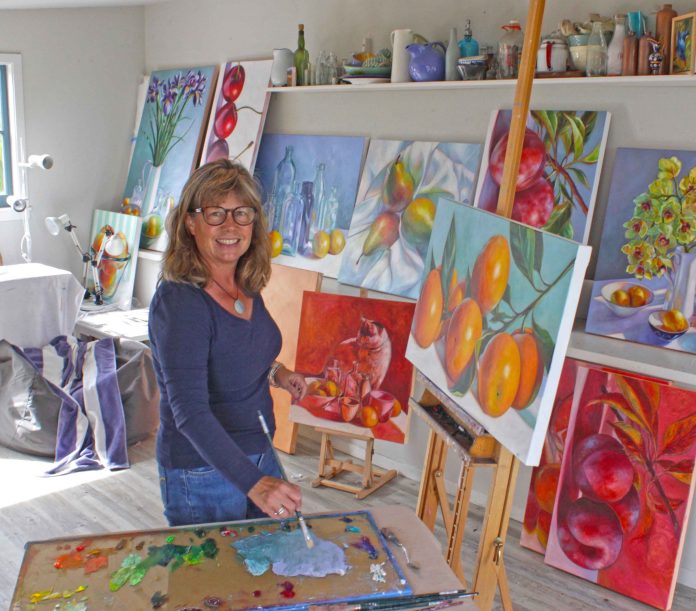
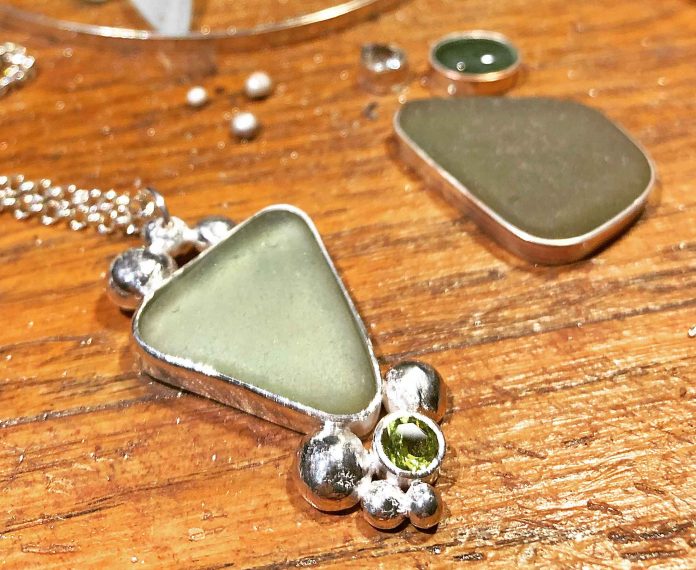
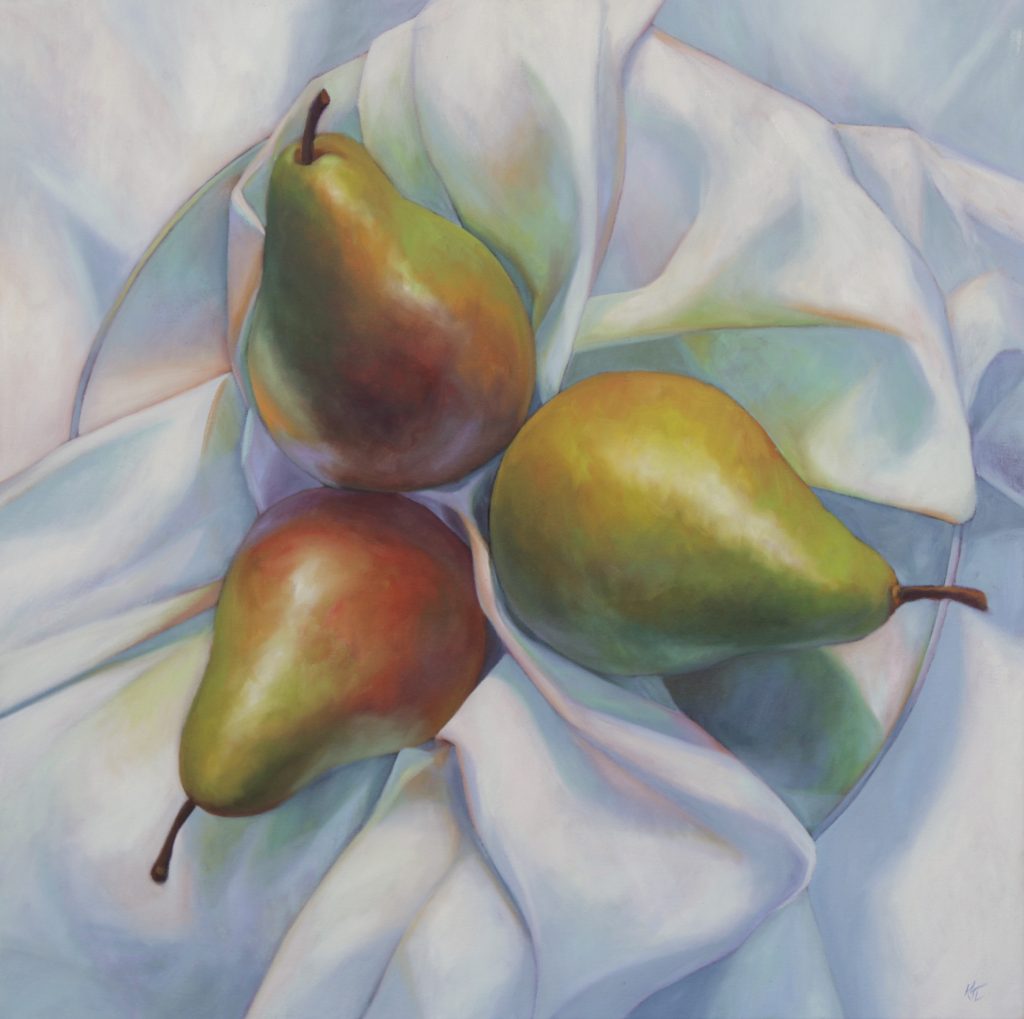
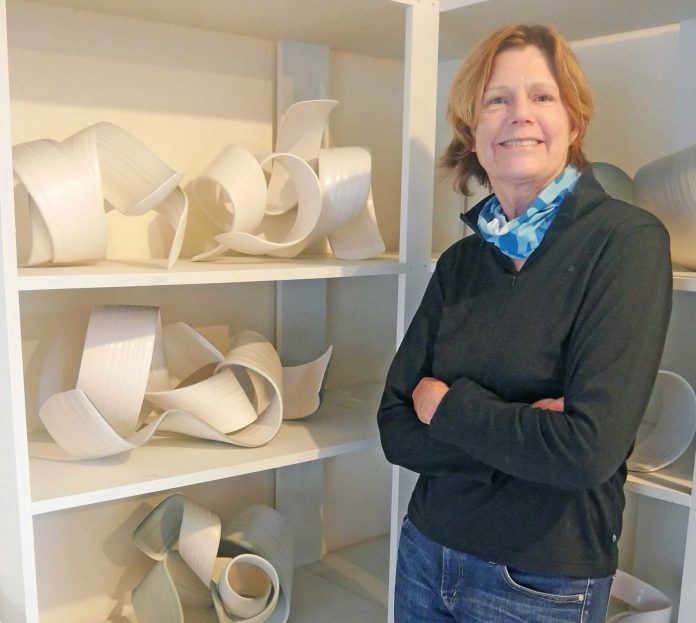
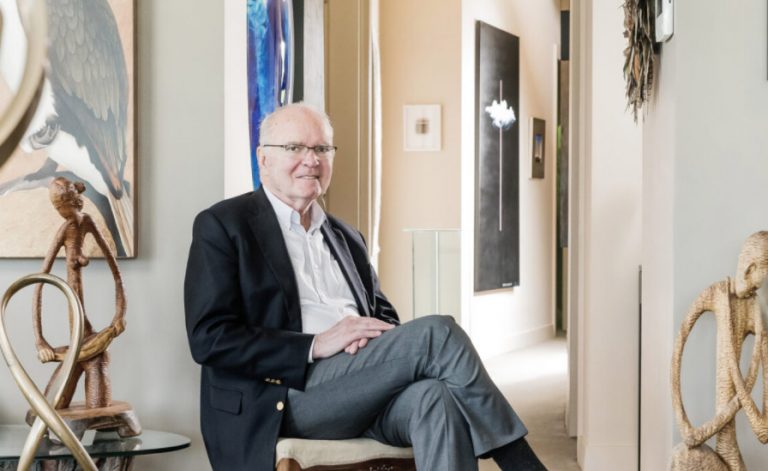
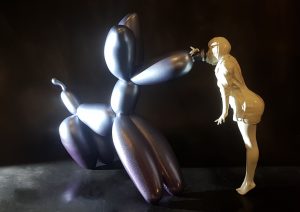
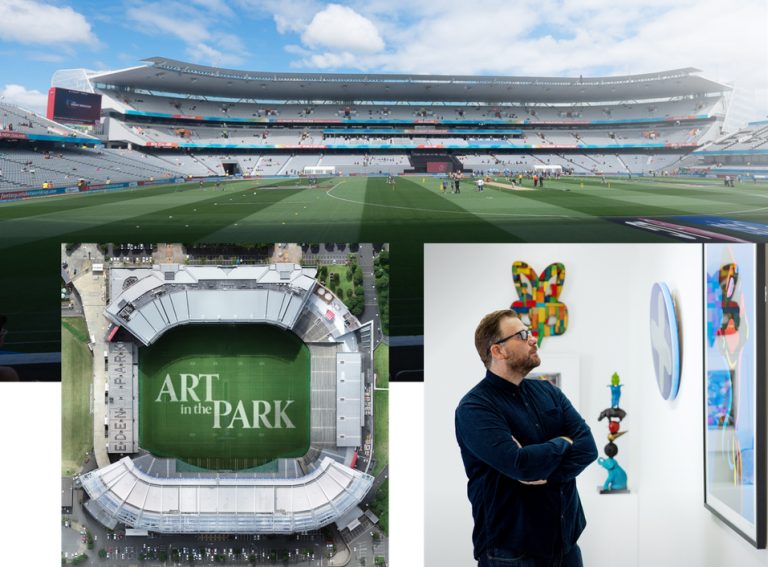
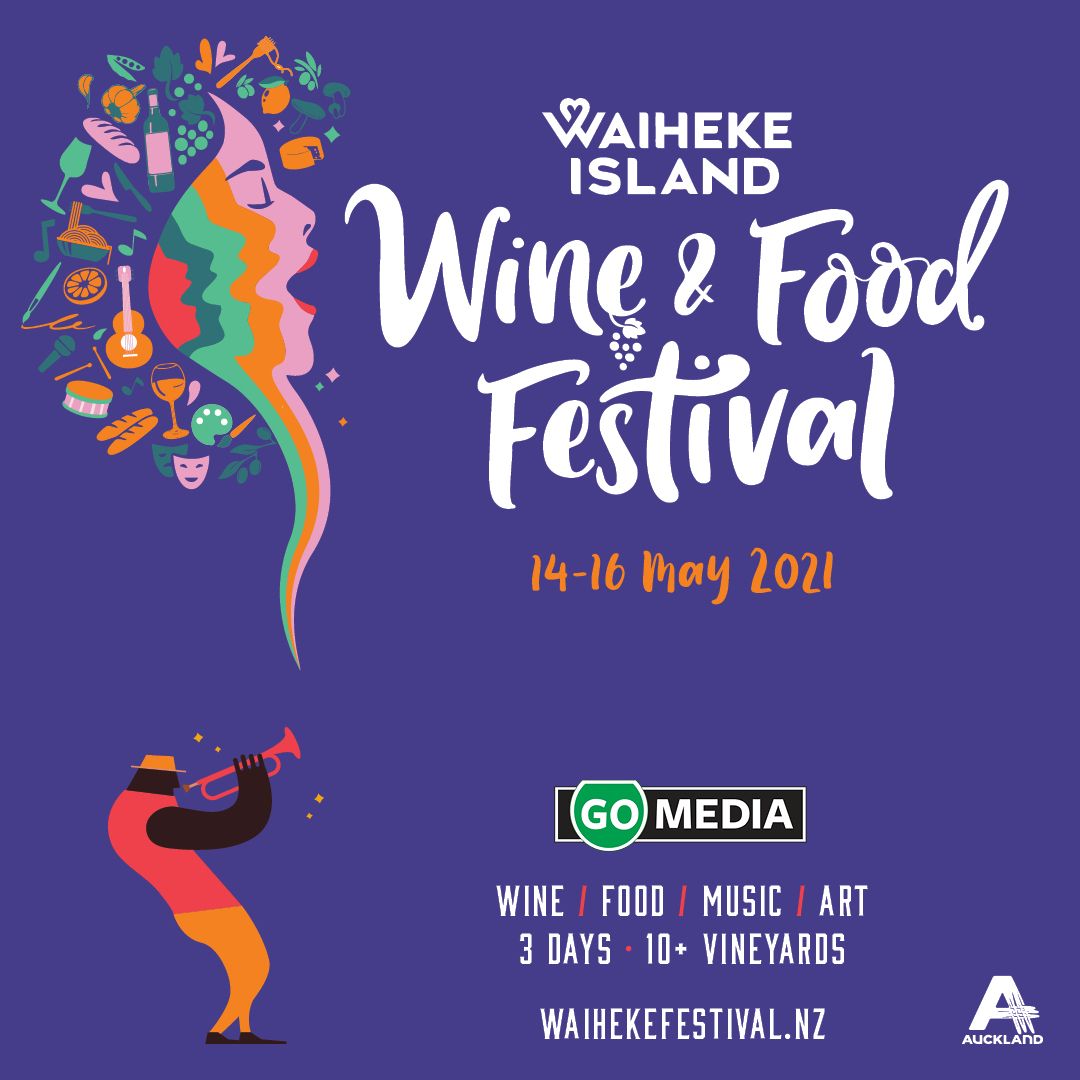
#waihekewine